Sunken hot tubs offer a luxurious blend of relaxation, design innovation, and seamless integration with the surrounding landscape. From natural stone enclosures to modern concrete shells, wooden decks, hidden under-deck installations, and infinity-edge designs, these 20 ideas showcase diverse approaches to creating a unique backyard oasis. Incorporating elements like lighting, greenery, fire features, and eco-friendly materials can elevate the overall ambiance, while thoughtful placement—whether beachside, rooftop, or within a zen garden—ensures both functionality and aesthetic appeal. Whether you prefer rustic timber retreats or sleek glass walls, these concepts provide inspiration for crafting a sunken hot tub that perfectly complements your outdoor living space.
1. Seamless Integration with Natural Stone Surround
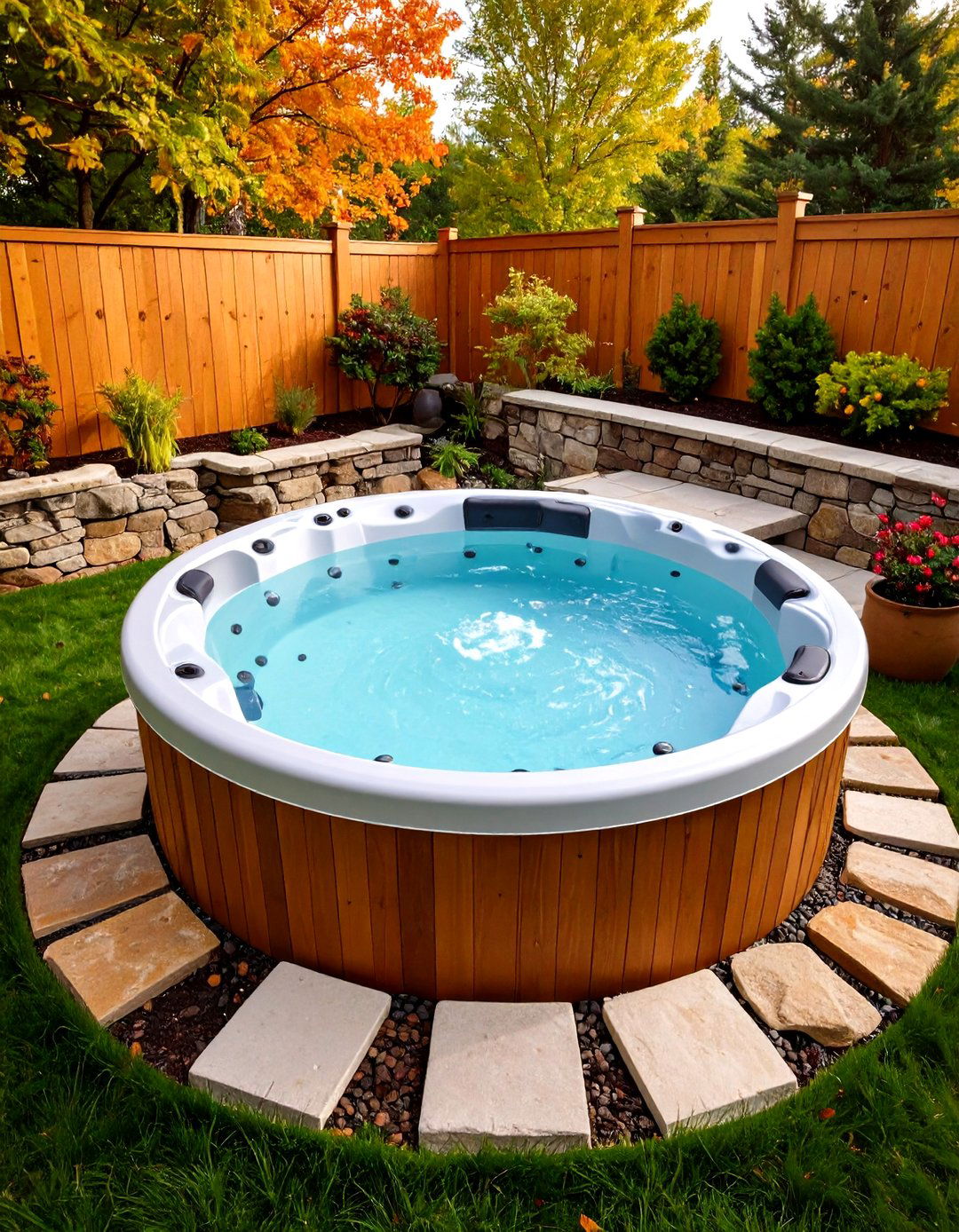
Embedding a hot tub into a stone-clad enclosure creates a timeless, organic look that harmonizes with garden elements. Natural stone offers durability and heat retention, ensuring the spa stays warm longer while blending with hardscape features like patios and retaining walls. Varying stone sizes and textures adds visual interest, and low-profile seating ledges carved into the surround invite socializing. Proper drainage and weeper systems beneath the stone are essential to prevent water buildup and maintain structural integrity over time.
2. Modern Concrete Enclosure Design
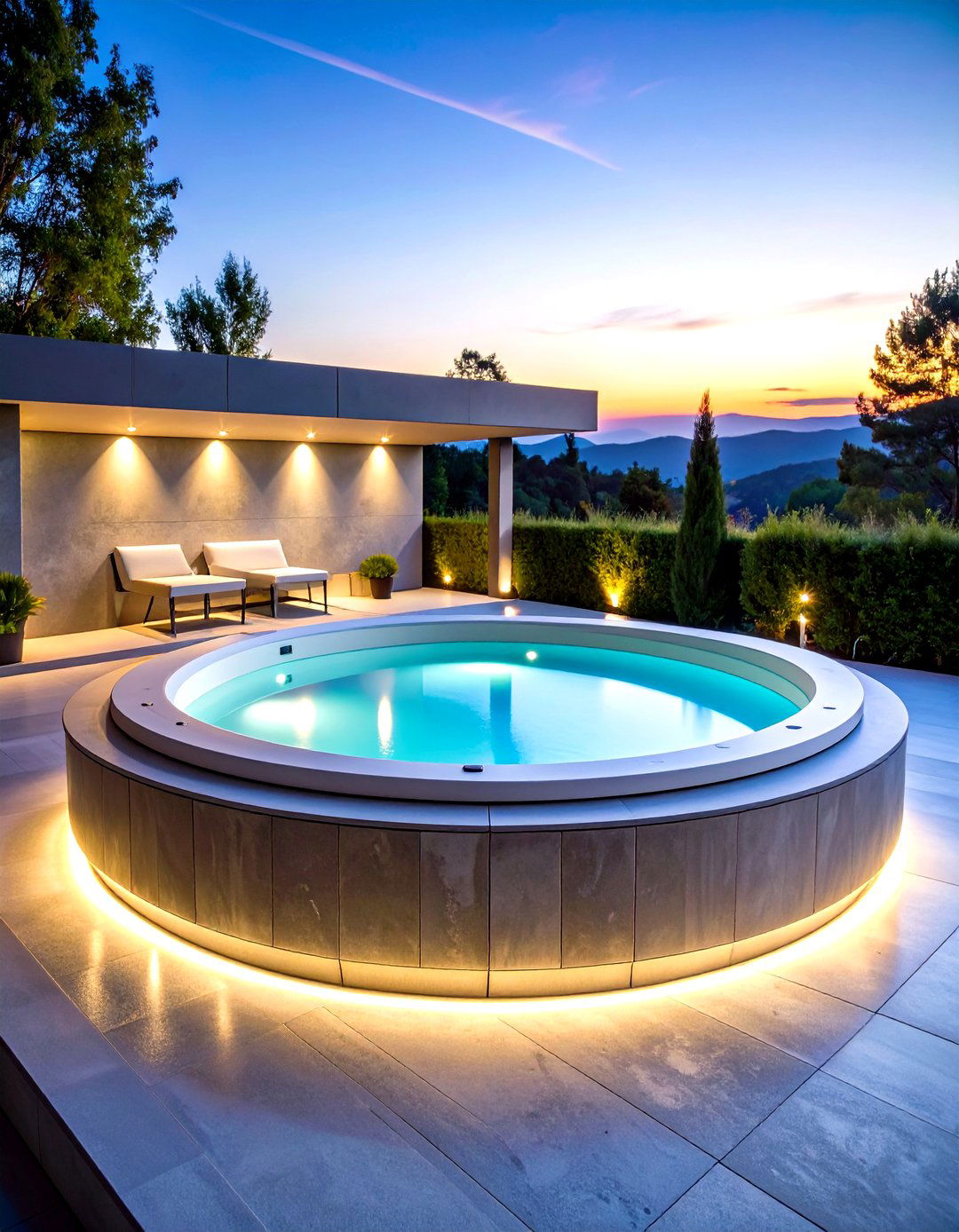
A sleek concrete shell offers a contemporary take on sunken hot tubs, providing clean lines and minimal maintenance. Concrete can be cast in custom shapes—rectangles, curves, even geometric patterns—and finished with smooth polish or aggregate textures. Its neutral palette complements modern furnishings and glass balustrades, while embedded LED strips can illuminate the perimeter for drama. Concrete’s thermal mass helps retain heat, but waterproofing membranes and flexible joint sealants are critical to prevent cracks and leaks.
3. Wooden Deck Blend
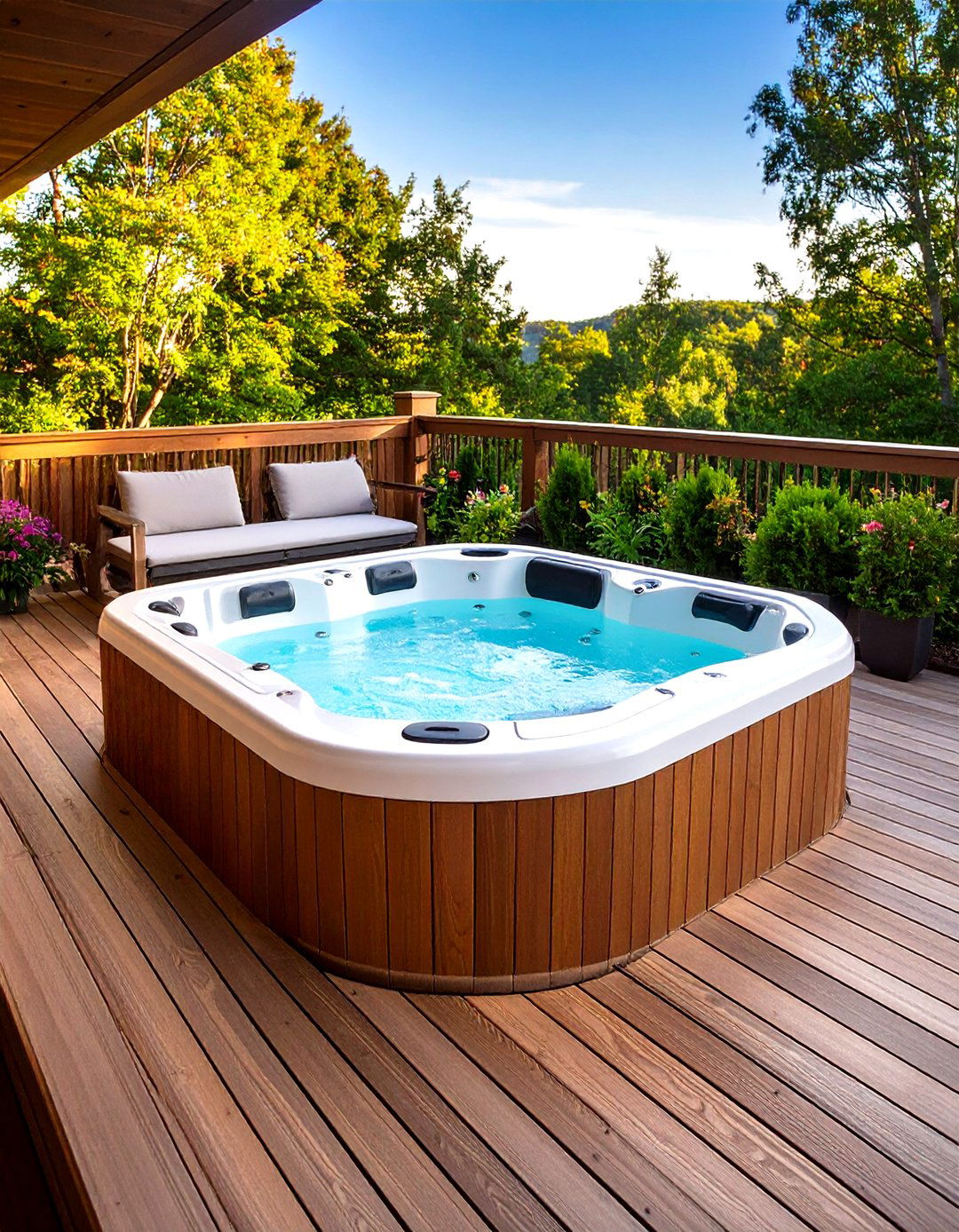
Surrounding a sunken hot tub with matching wood decking creates a warm, unified look that feels more like an integrated living area than a spa. Durable, weather-resistant species such as ipe, cedar, or composite planks ensure longevity against moisture and UV exposure. A flush-mounted deck with hidden access panels maintains a clean surface, while built-in benches and planters add functionality and greenery. Consider a slight slope and gap spacing to facilitate drainage and prevent wood rot over time.
4. Under-Deck Hidden Hot Tub
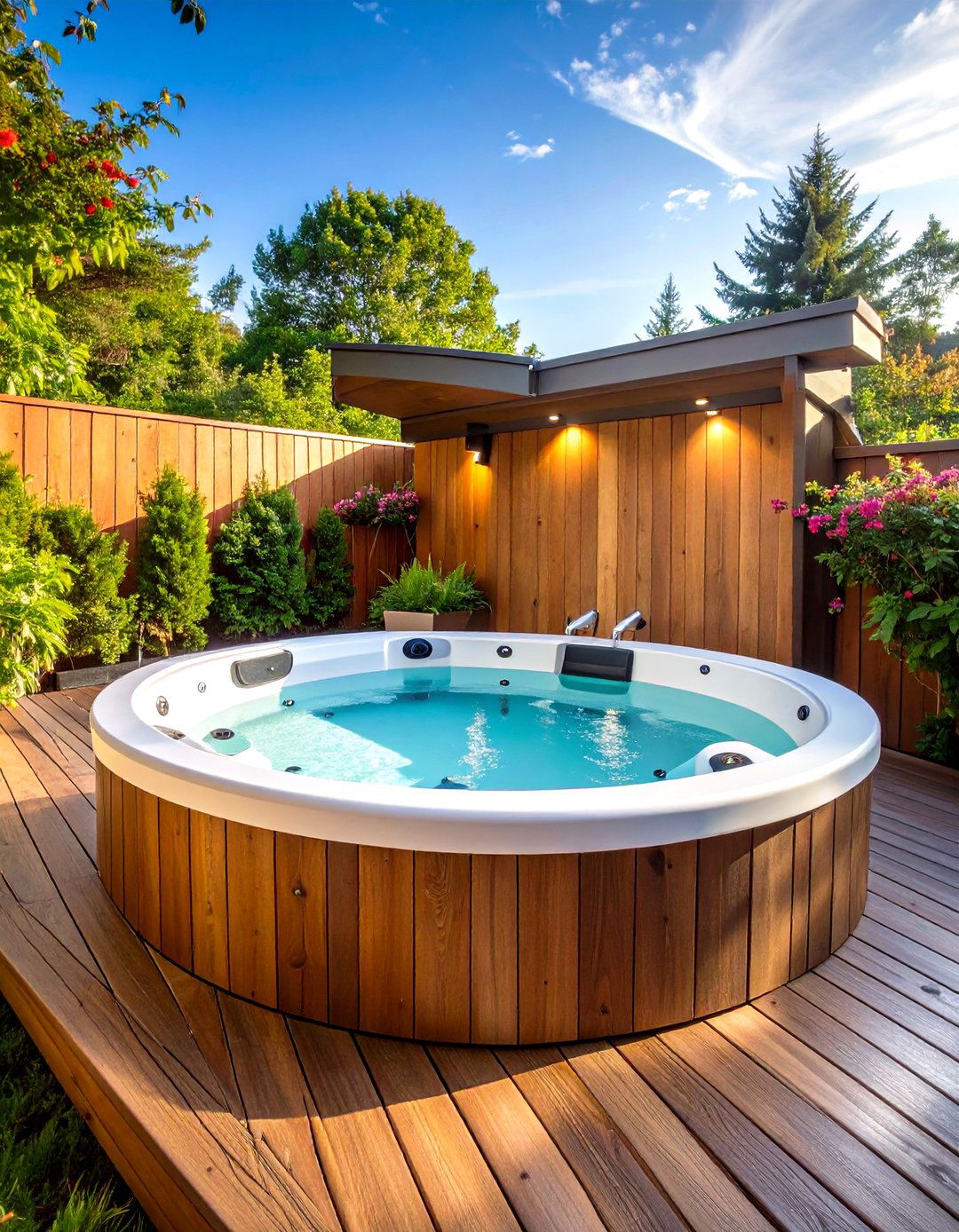
Installing the hot tub beneath an upper-level deck conceals the spa when not in use, maximizing backyard real estate. Access panels, hydraulic hatches, or sliding decking can reveal the tub at the push of a button, ideal for multi-purpose spaces. Adequate clearance, ventilation, and service access must be planned to accommodate maintenance. Framing should reinforce both the deck above and the hot tub base, while moisture-resistant materials like composite beams help prevent water damage in the enclosed space.
5. Illuminated Step-Lit Sunken Spa

Incorporating LED lighting along steps and seat perimeters enhances safety and ambiance for evening soaks. Waterproof, low-voltage strips can be recessed into step treads or bench edges, creating a soft glow that highlights the sunken form. Color-changing LEDs allow mood customization, from tranquil blues to festive hues. Ensure lights are marine-grade and properly sealed against moisture, and run controls through a GFCI-protected circuit to meet electrical codes.
6. Tropical Bamboo Surround
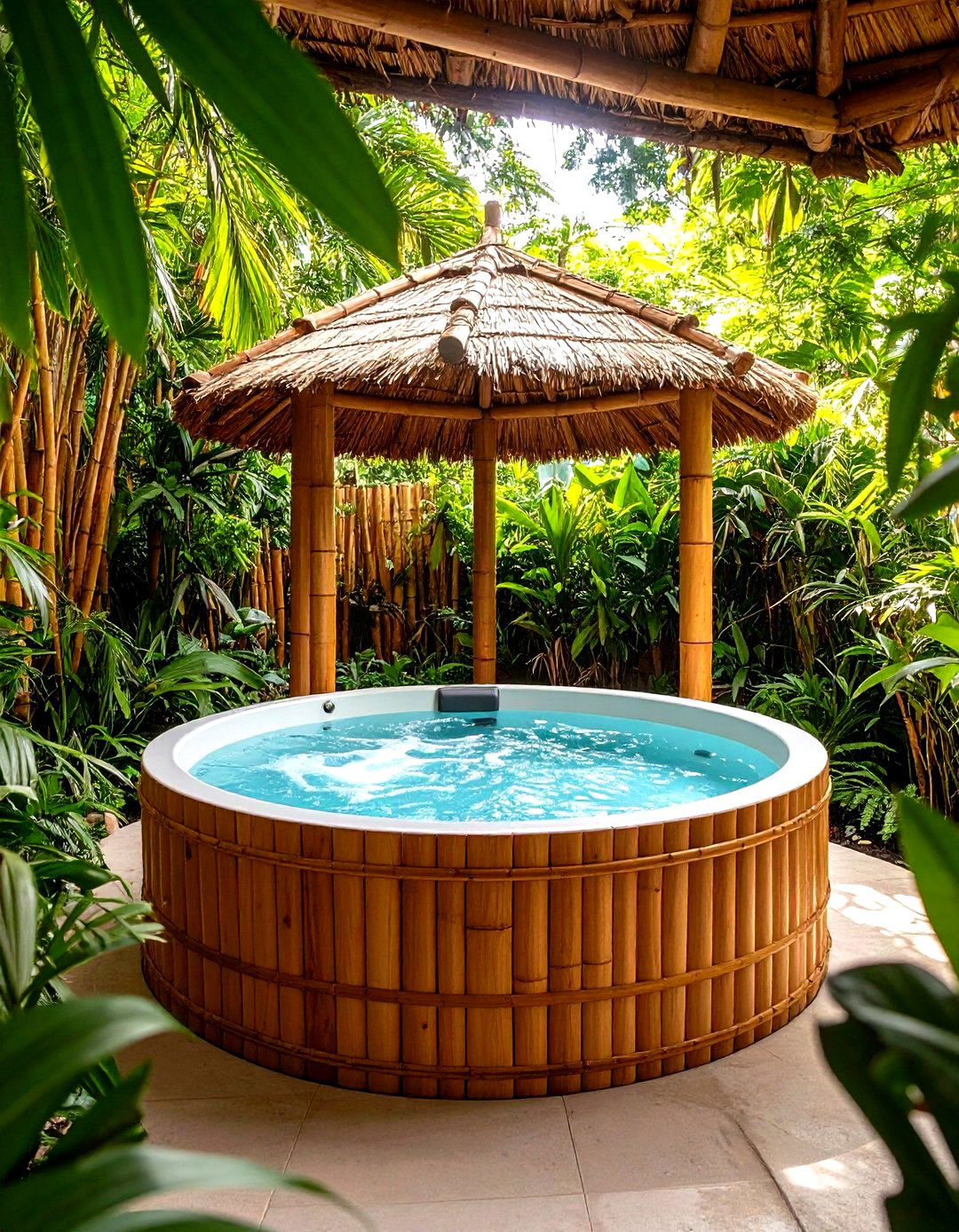
Evoking island resorts, bamboo decking and thatched pergolas over a sunken tub create an immersive tropical retreat. Use treated bamboo poles for overhead shade structures and privacy screens, and line the tub’s edge with bamboo paneling. Integrate lush foliage—palms, ferns, and orchids—for a verdant backdrop. This design thrives in humid climates but requires regular bamboo sealing to resist moisture and pests. A concealed irrigation drip system can keep plants vibrant without surface hoses.
7. Minimalist Zen Garden Setting
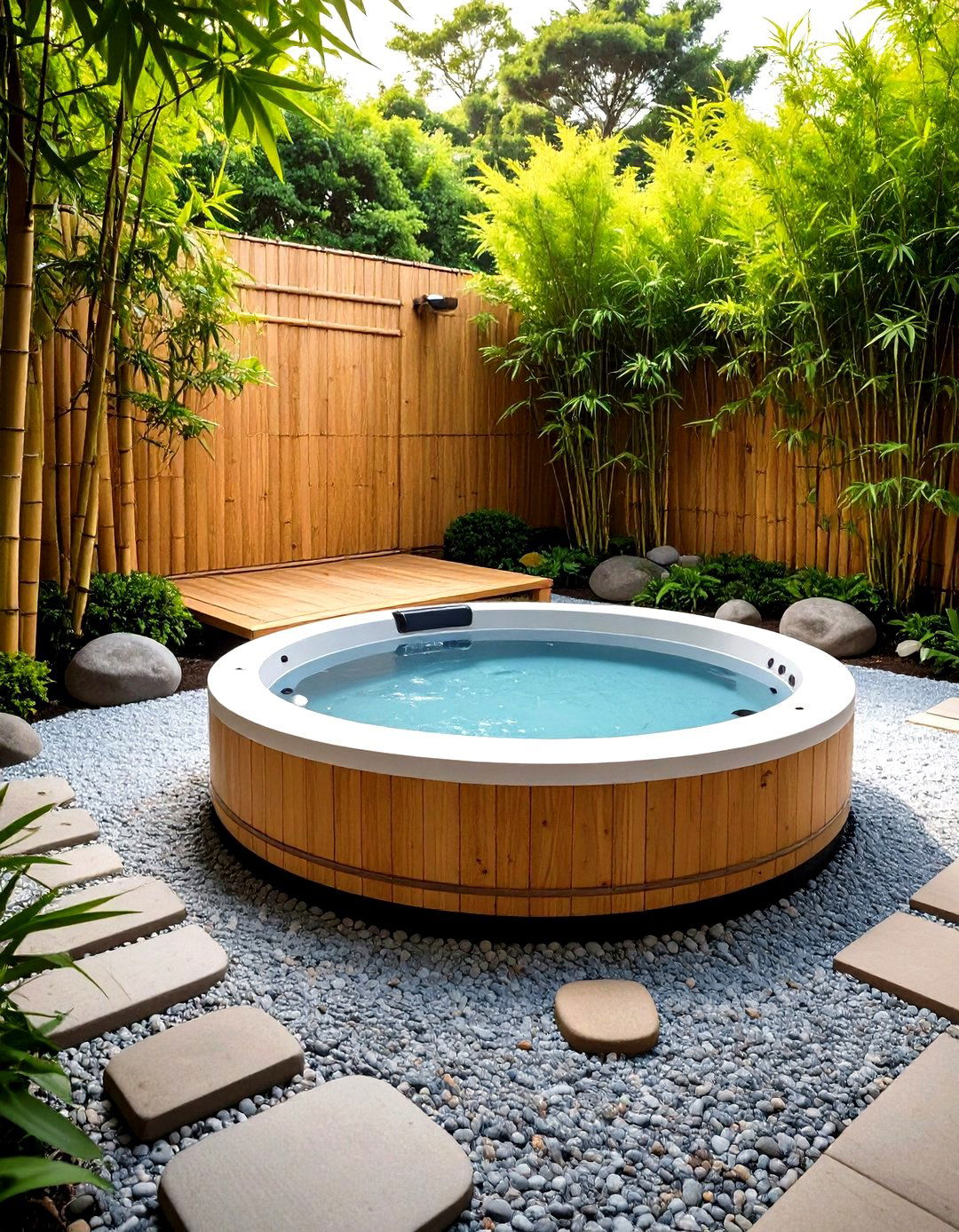
A sunken hot tub nestled within a raked gravel courtyard and framed by bamboo fencing channels Japanese zen garden aesthetics. Place the tub flush with a gravel bed and incorporate stepping stones to encourage mindful approach. Surrounding lanterns, a bamboo water spout (shishi-odoshi), and simple greenery like moss and bonsai accentuate tranquility. Use muted materials—concrete, gravel, and dark wood—to maintain a minimalist palette and foster a sense of calm.
8. Rustic Log and Timber Retreat
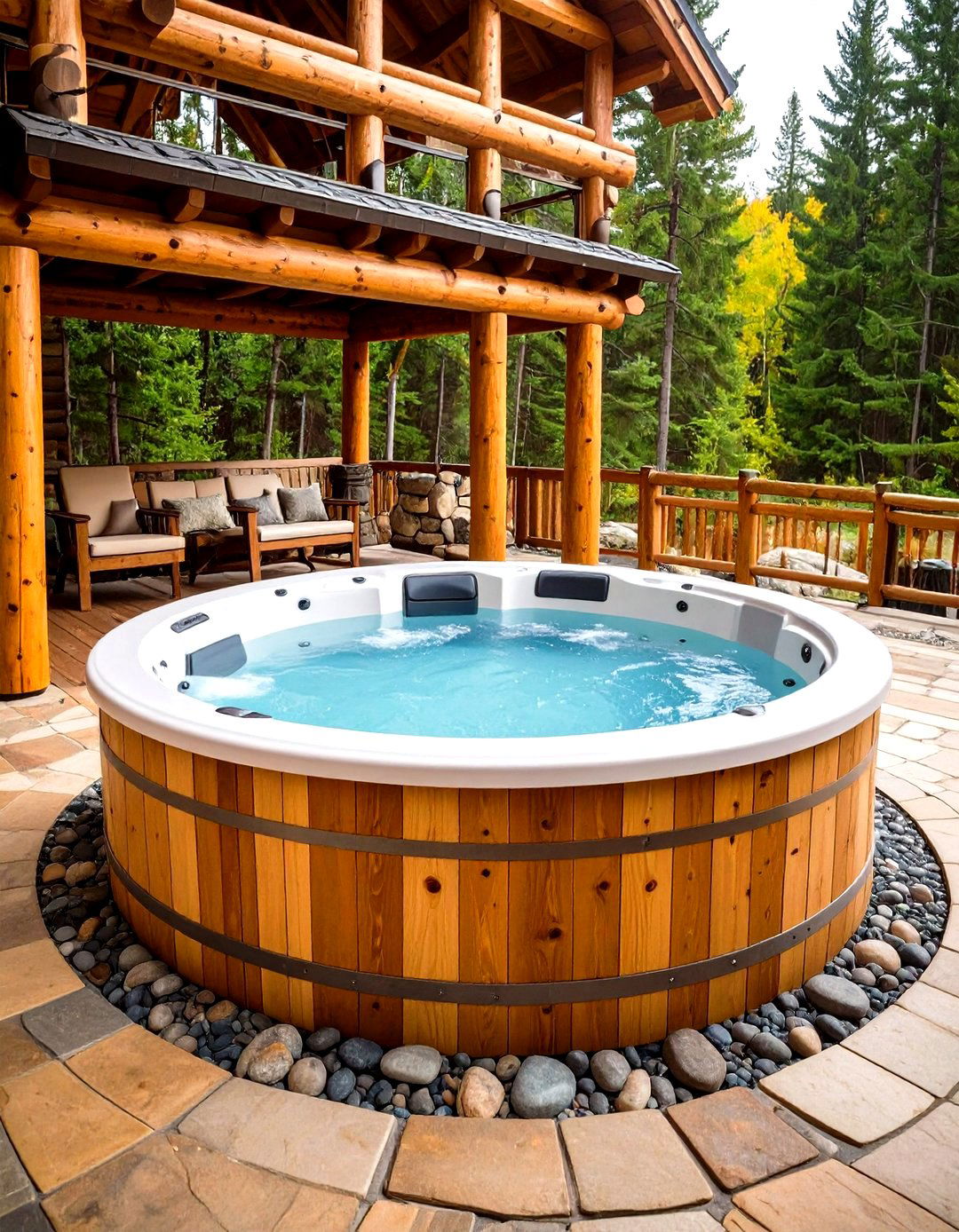
For a cabin-style backyard, craft the sunken hot tub enclosure from hewn logs or reclaimed timber beams. Rough-cut textures and natural wood tones evoke mountain lodges, and a surrounding timber deck can include log railings and built-in seating. Complement with stone flooring or a pebble-lined plunge area. Weatherproof the wood with clear sealants and install hidden maintenance panels beneath floorboards for service access.
9. Contemporary Glass Panel Walls
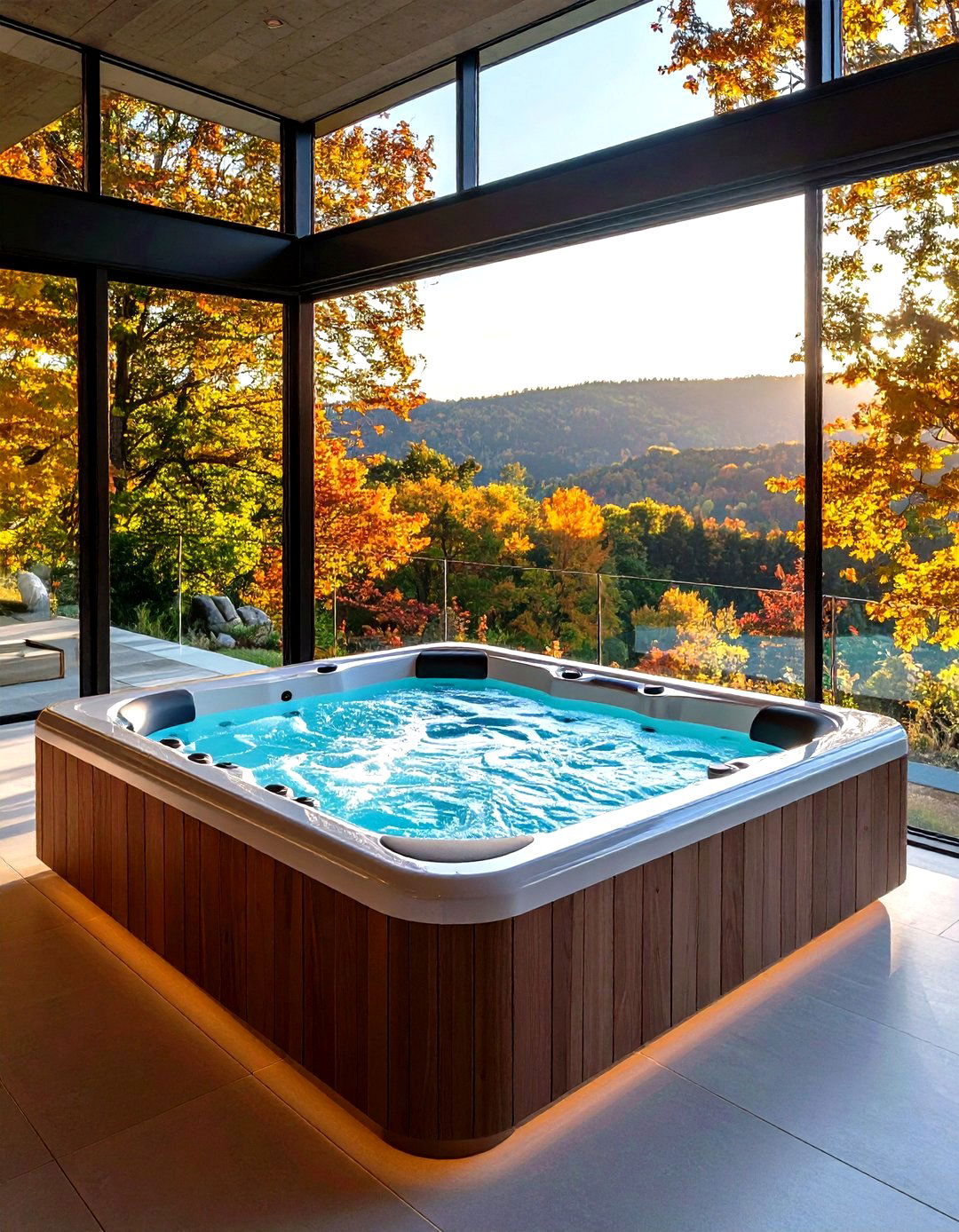
Surround a sunken hot tub with frameless glass walls for unobstructed views of the garden or skyline. Tempered, laminated glass panels secured by minimalist hardware create a floating effect, amplifying natural light and providing wind protection. Frosted or tinted sections can add privacy without blocking sightlines. Structural posts and footings must be engineered to support glass loads, and silicone gaskets guarantee watertight seals.
10. Mediterranean Tiled Sunken Tub
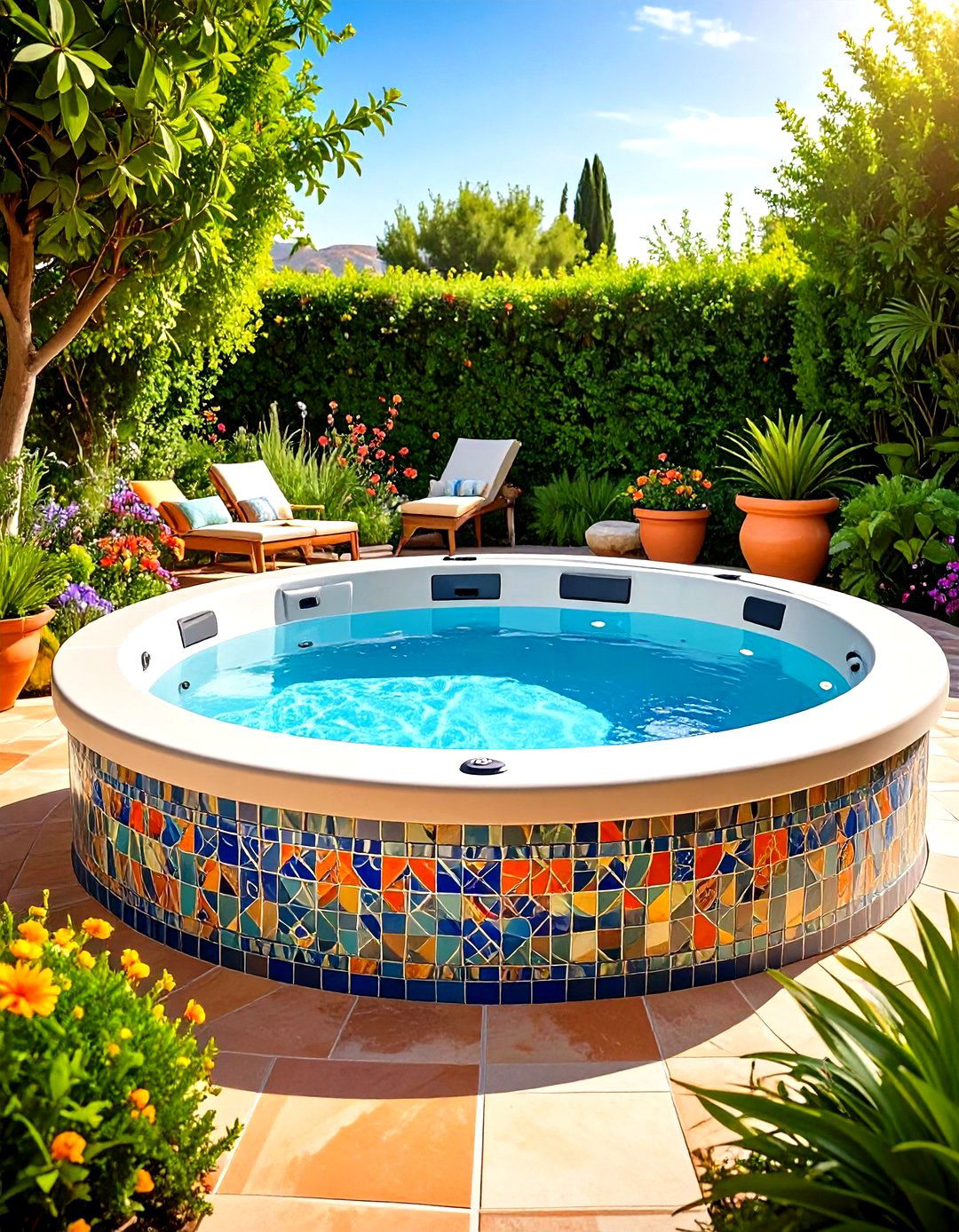
Incorporate colorful ceramic or mosaic tiles—think blues, terracottas, and geometric motifs—around a sunken hot tub for a Mediterranean flair. Tiles add visual warmth and are easy to clean, while grout lines can include anti-mold additives for hygiene. Pair with stucco walls, drought-tolerant succulents, and terracotta pots to amplify the Mediterranean ambiance. Ensure tiles and grout are rated for constant water immersion to prevent deterioration.
11. Rooftop Sunken Spa Oasis
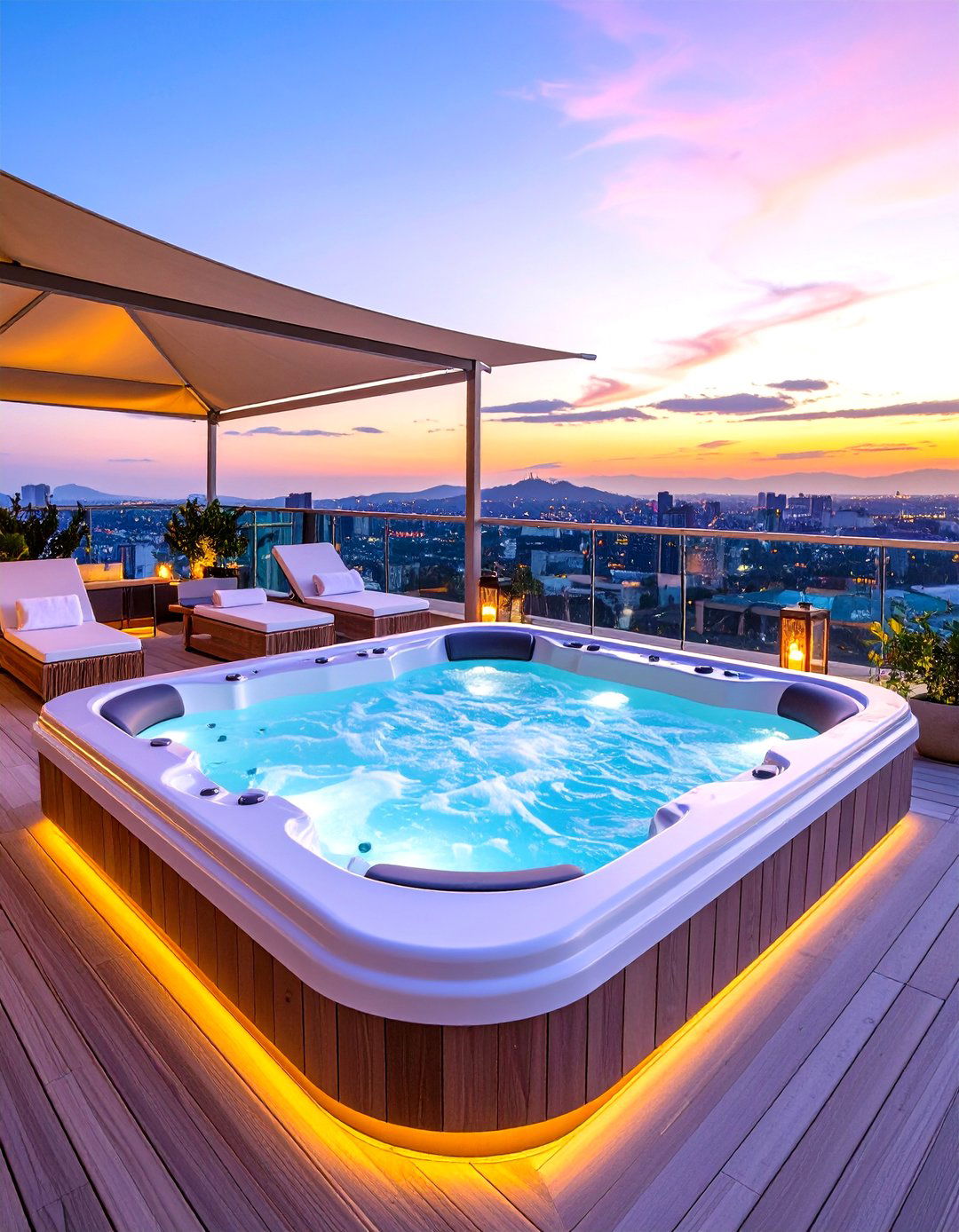
Sunken hot tubs on rooftops maximize urban views and private retreats. Reinforce rooftop slabs to handle approximately 2,000 pounds of water per cubic yard and include waterproofing membranes beneath decking. Integrate glass railings for cityscape panoramas and add pergolas or retractable canopies for shade. Concealed plumbing and electrical chases simplify maintenance, while lightweight composite decking reduces structural loads.
12. Beachside Cedar Wraparound
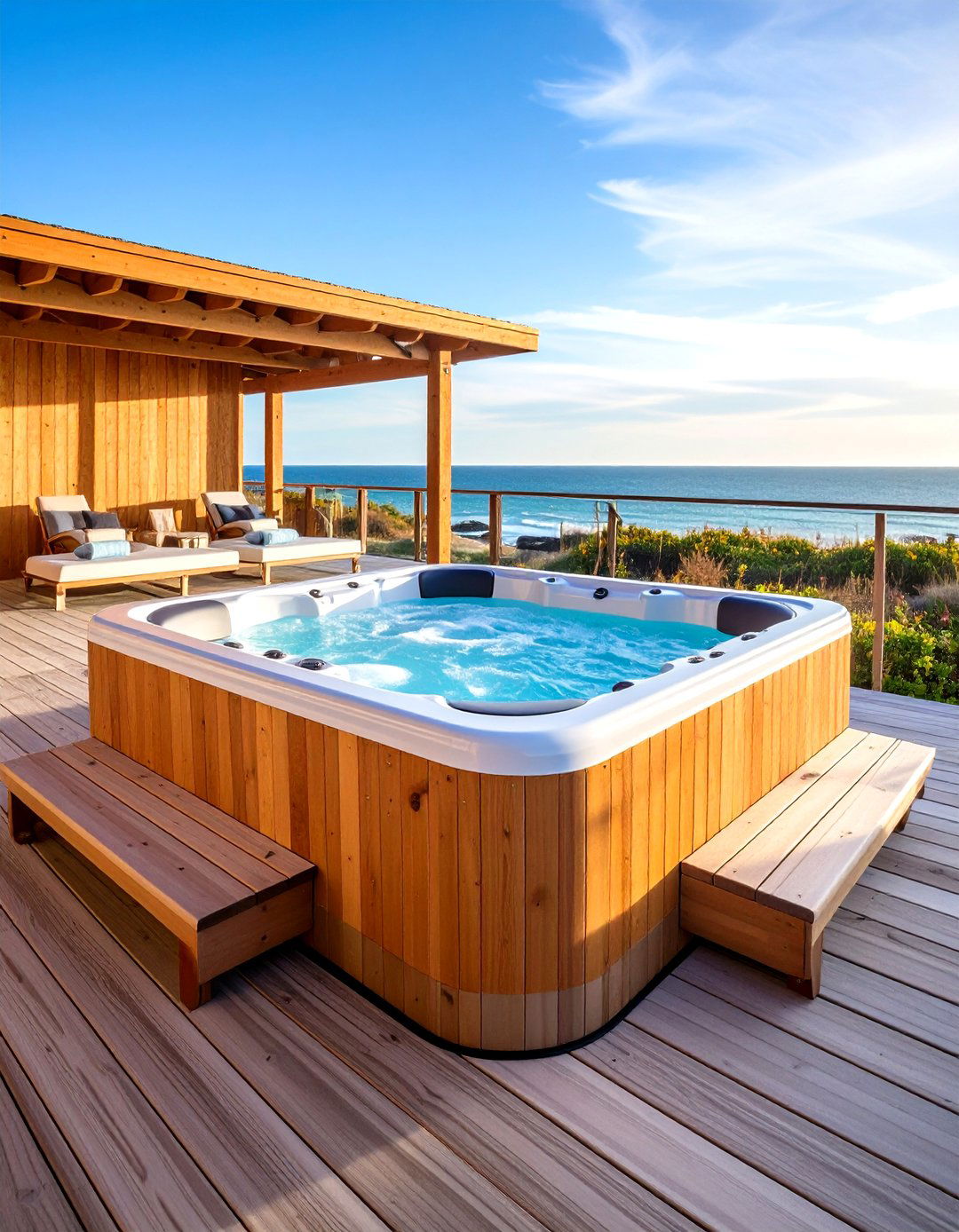
On coastal properties, a cedar wraparound deck and sunken cedar-lined tub create a laid-back beach house vibe. Cedar resists salt air corrosion and weathers to a silvery patina over time. Incorporate built-in benches with storage for towels and beach gear, and use glass windbreak panels to preserve ocean views. Elevated deck framing with widened joist spacing promotes airflow, preventing moisture buildup beneath the boards.
13. Partially Sunken Infinity-Edge Tub
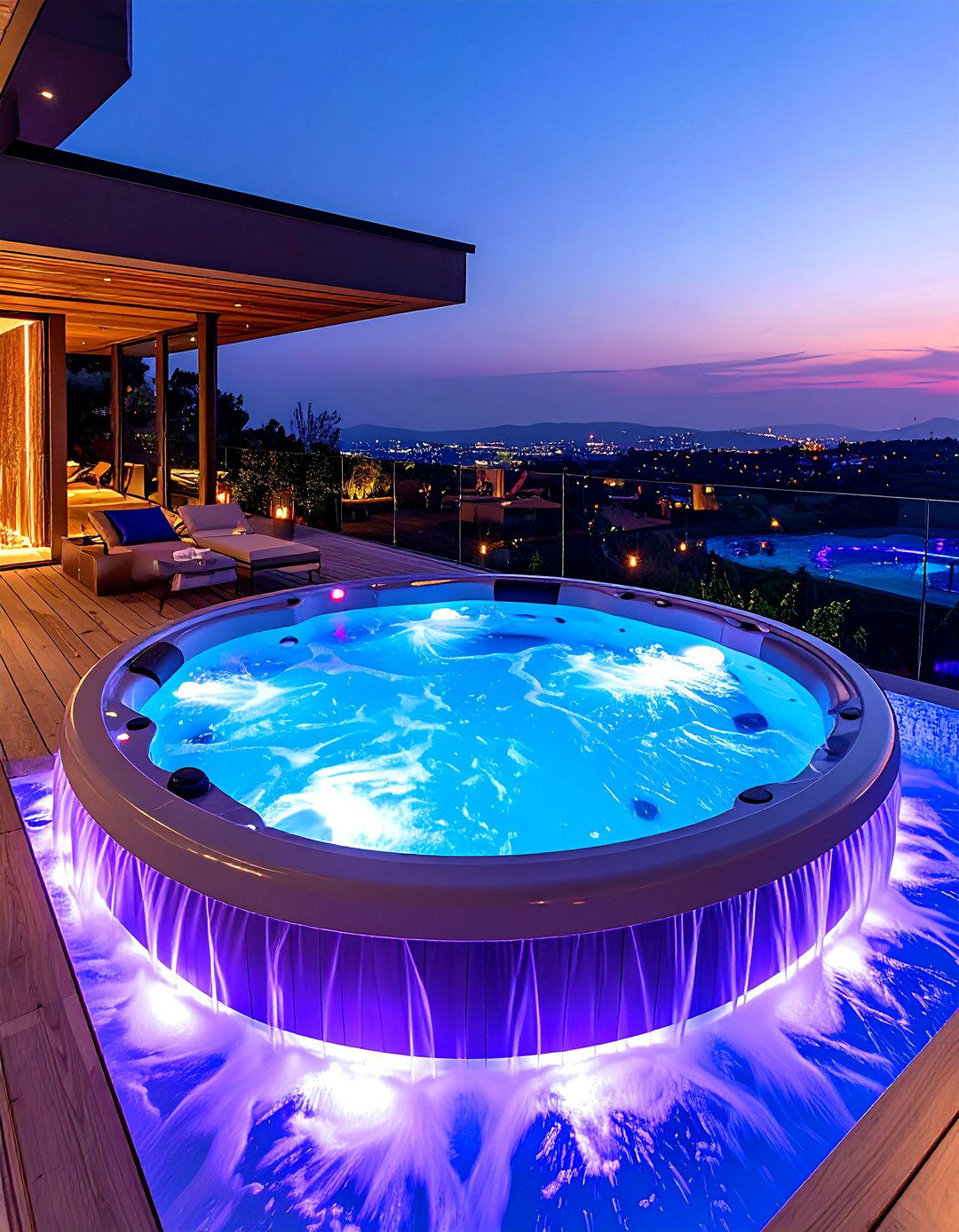
Combining a plunge pool and hot tub, a partially sunken infinity-edge design lets water cascade over one side into a catch basin, evoking high-end resort spas. Place the tub at ground level with one wall removed and glass-lined to maintain the illusion of endless water. Integrate LED uplighting beneath the lip for dramatic evening effects. Careful calibration of skimmer pumps and catch basin capacity is vital to sustain the continuous flow.
14. Boho-Chic Sunken Salon
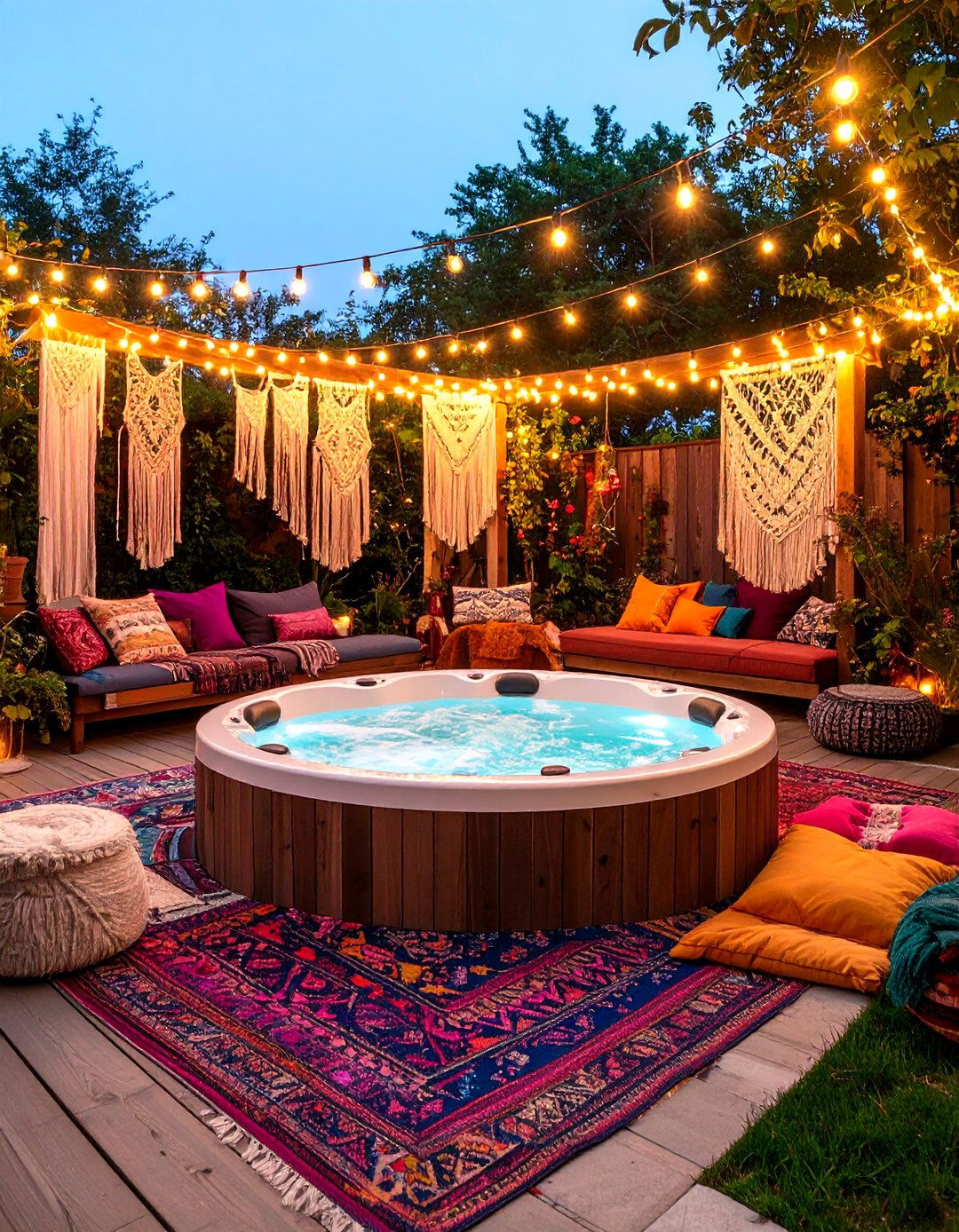
A bohemian sunken hot tub area features layered rugs, pouf seating, macramé wall hangings, and eclectic lanterns around a sunken tub. Use a low, decorative fence or lattice for privacy and hang fabric canopies overhead for filtered shade. Integrate potted plants—snake plants, philodendrons, and palms—and string lights for a relaxed, festival-inspired ambiance. Weather-resistant textiles and quick-drain floor cushions ensure longevity and easy cleanup.
15. Indoor-Outdoor Transitional Sunken Tub
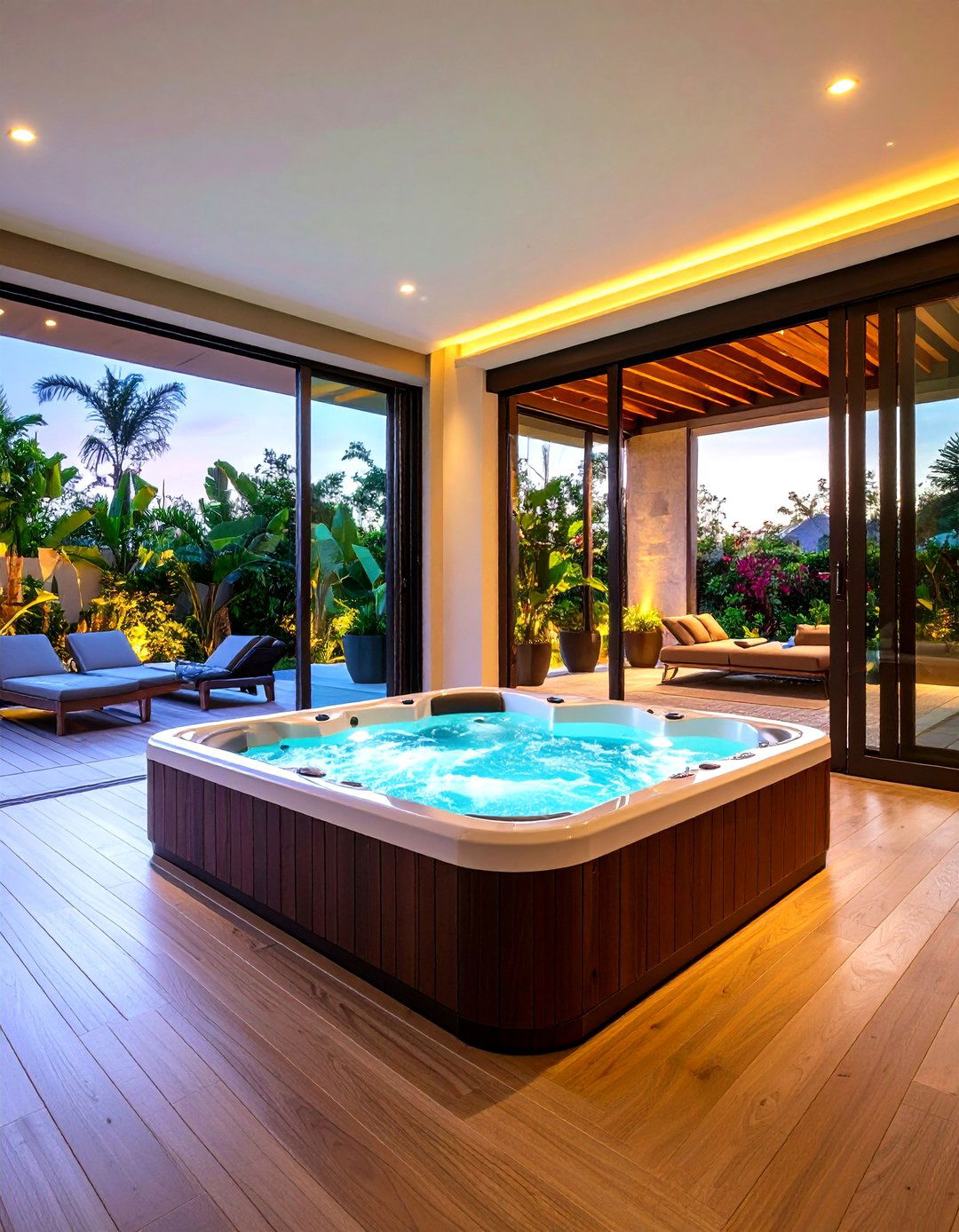
Position a sunken hot tub at the threshold between interior and exterior spaces, with retractable glass walls that open for seamless flow. Use matching floor finishes—polished concrete or porcelain tile—inside and out. Add roll-away privacy screens and overhead misters for a tropical retreat feel. Proper waterproofing under the interior slab and gutter channels within the threshold keep water contained, while a dehumidifier prevents indoor moisture issues.
16. Plunge Pool Dual-Function Sunken Tub
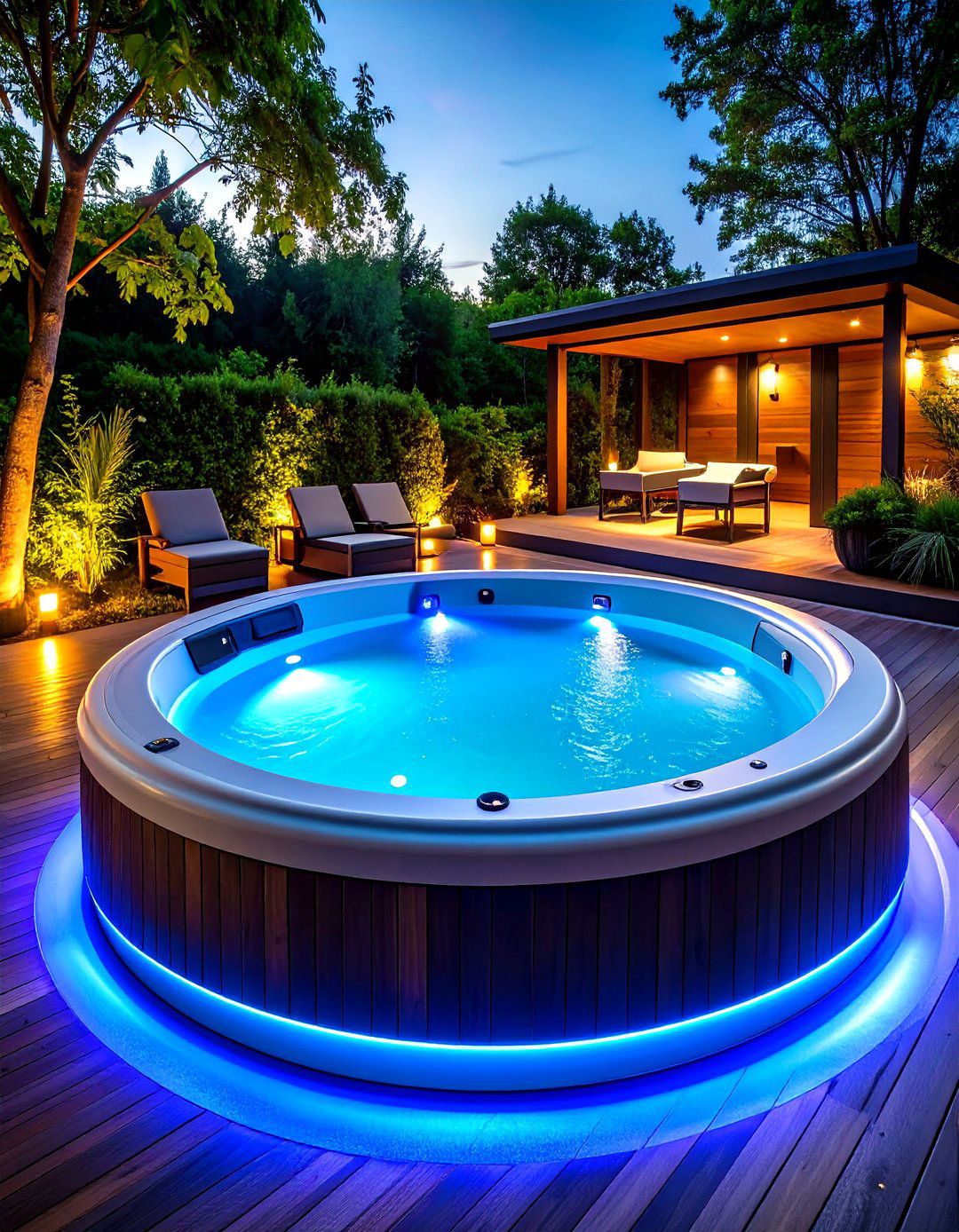
A plunge pool that doubles as a hot tub offers cooling dips in summer and heated soaks in cooler months. Incorporate separate heating and filtration zones to switch between functions quickly. Use dark interior finishes to absorb heat and add fiber optic lighting for nighttime ambiance. Automated controls can adjust jets, temperature, and lighting at the push of a button, optimizing versatility year-round.
17. Modular Composite Surround
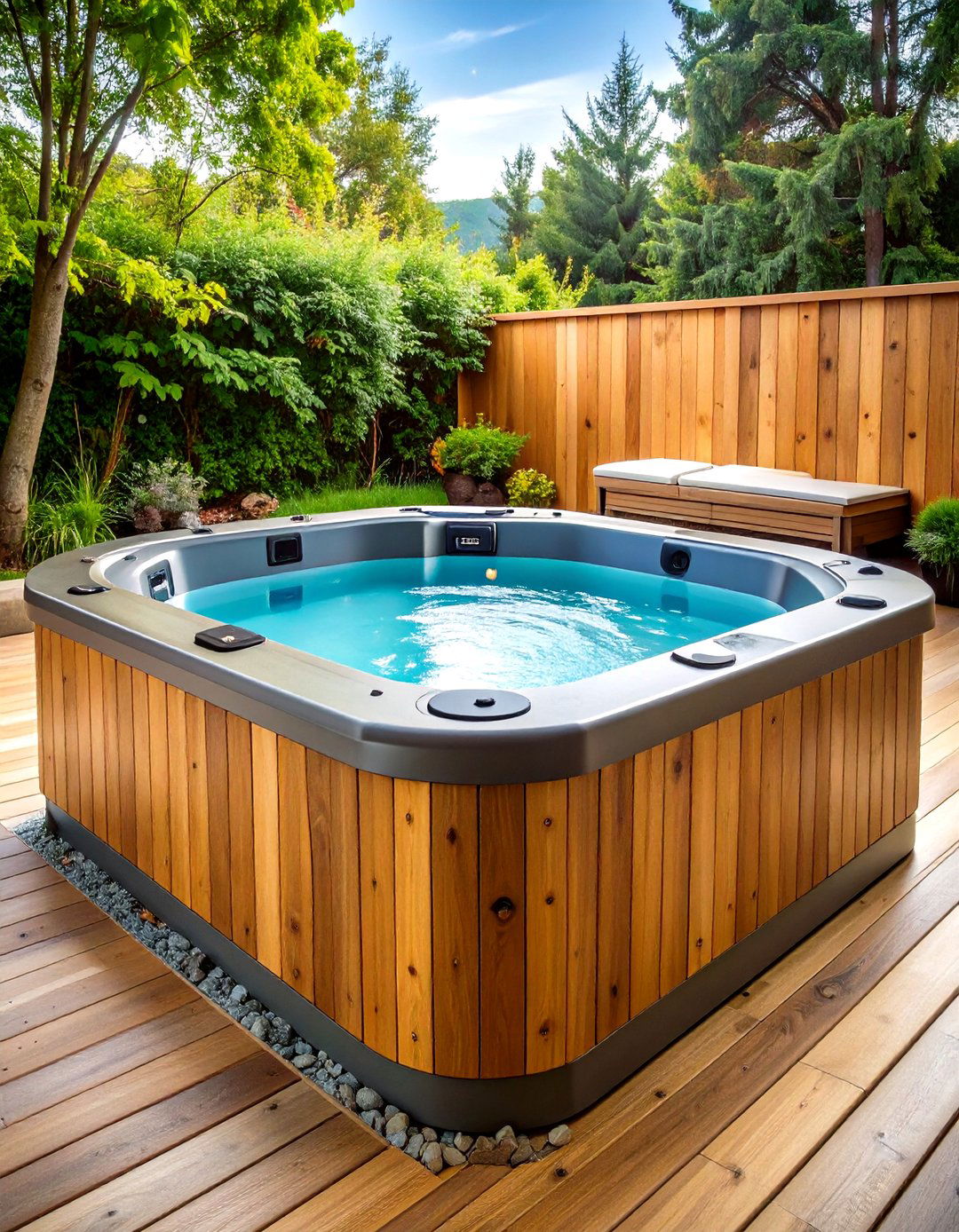
Prefabricated composite panels allow quick installation of a sunken hot tub enclosure with low maintenance. Panels mimic wood, stone, or concrete textures and resist fading, mold, and moisture. Snap-together designs let you customize shapes and sizes, and hidden clips create clean edges. Beneath, a perforated under-tub platform eases drainage and simplifies access for service technicians.
18. Fire and Water Combination Feature
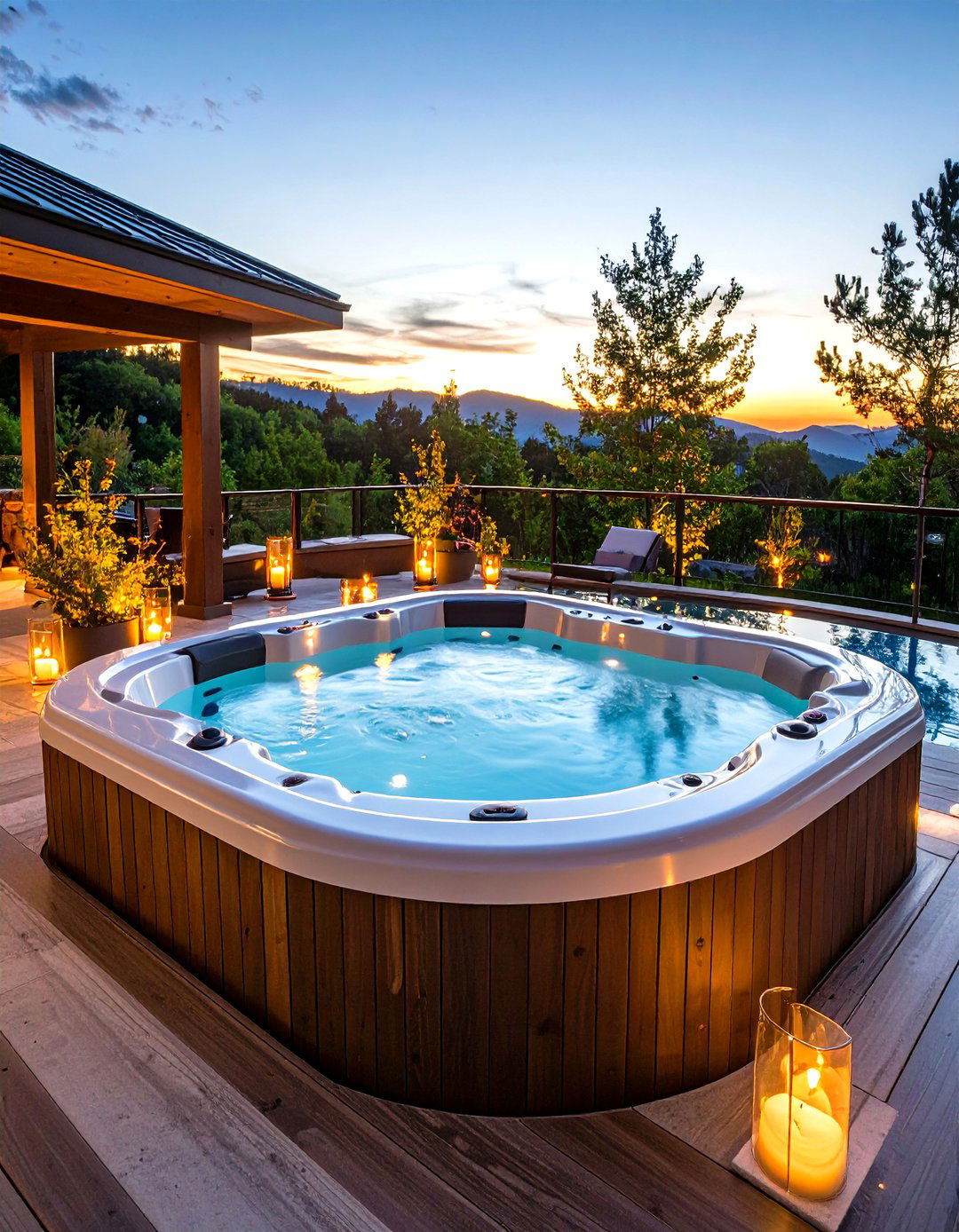
Enhance a sunken hot tub with built-in fire bowls or linear flame features at the rim. Natural gas or propane burners set within stone or metal housings frame the spa, providing warmth and ambiance. Position lava rocks or reflective glass media around the flames for safety and visual effect. Ensure proper ventilation and clearance distances per local fire codes, and integrate electronic ignition systems for convenience.
19. Garden Potager Sunken Spa
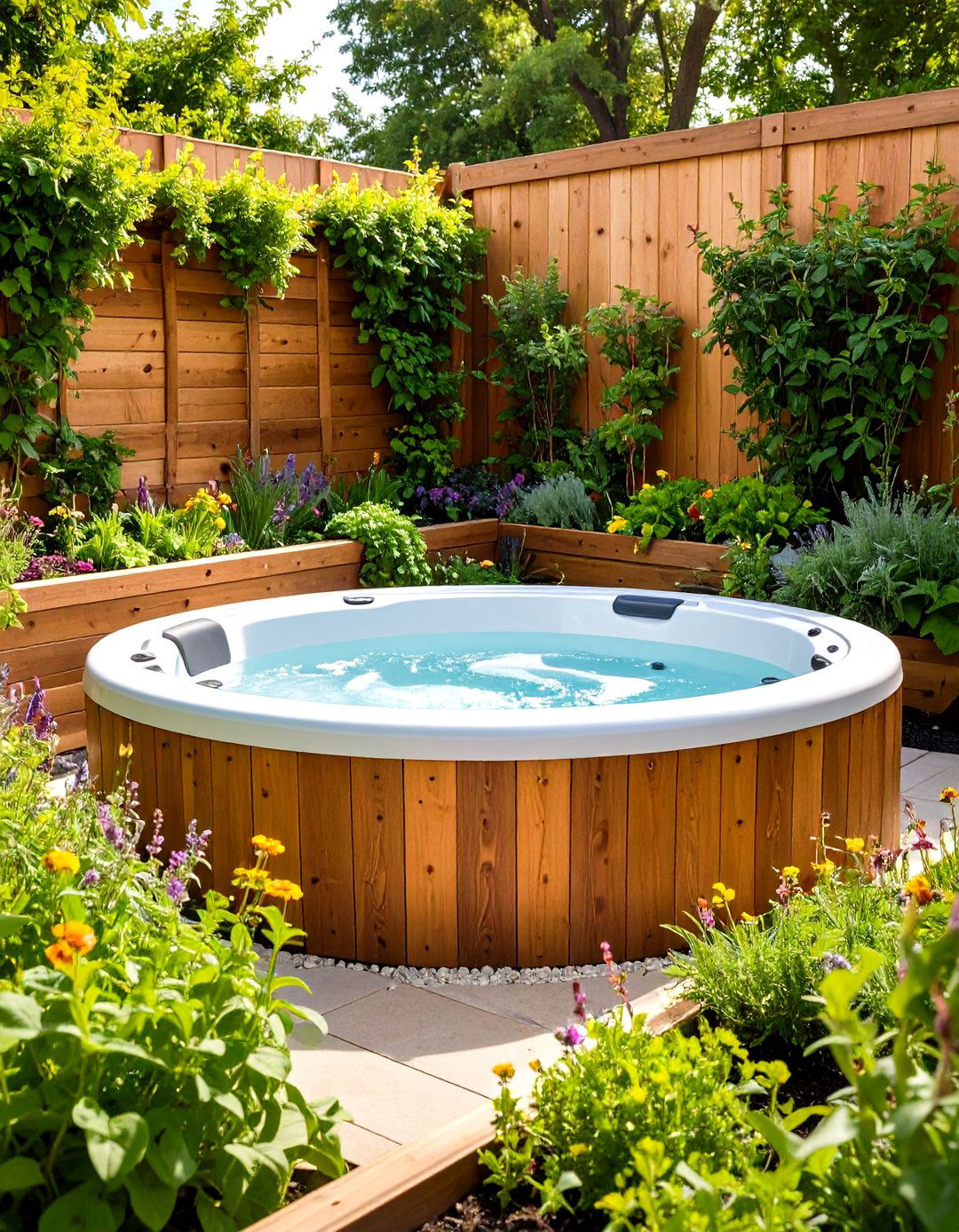
Nestle a sunken hot tub within a potager-style kitchen garden, surrounded by raised beds of herbs, vegetables, and flowers. The greenery provides natural privacy and sensory delights—fragrance, color, and texture—while wooden sleeper walls frame the beds. A gravel pathway leads to the tub, and a small pergola overhead supports climbing vines. Grouped plantings of lavender, mint, and rosemary add aromatic appeal when heated steam wafts from the spa.
20. Eco-Friendly Recycled Materials Tub
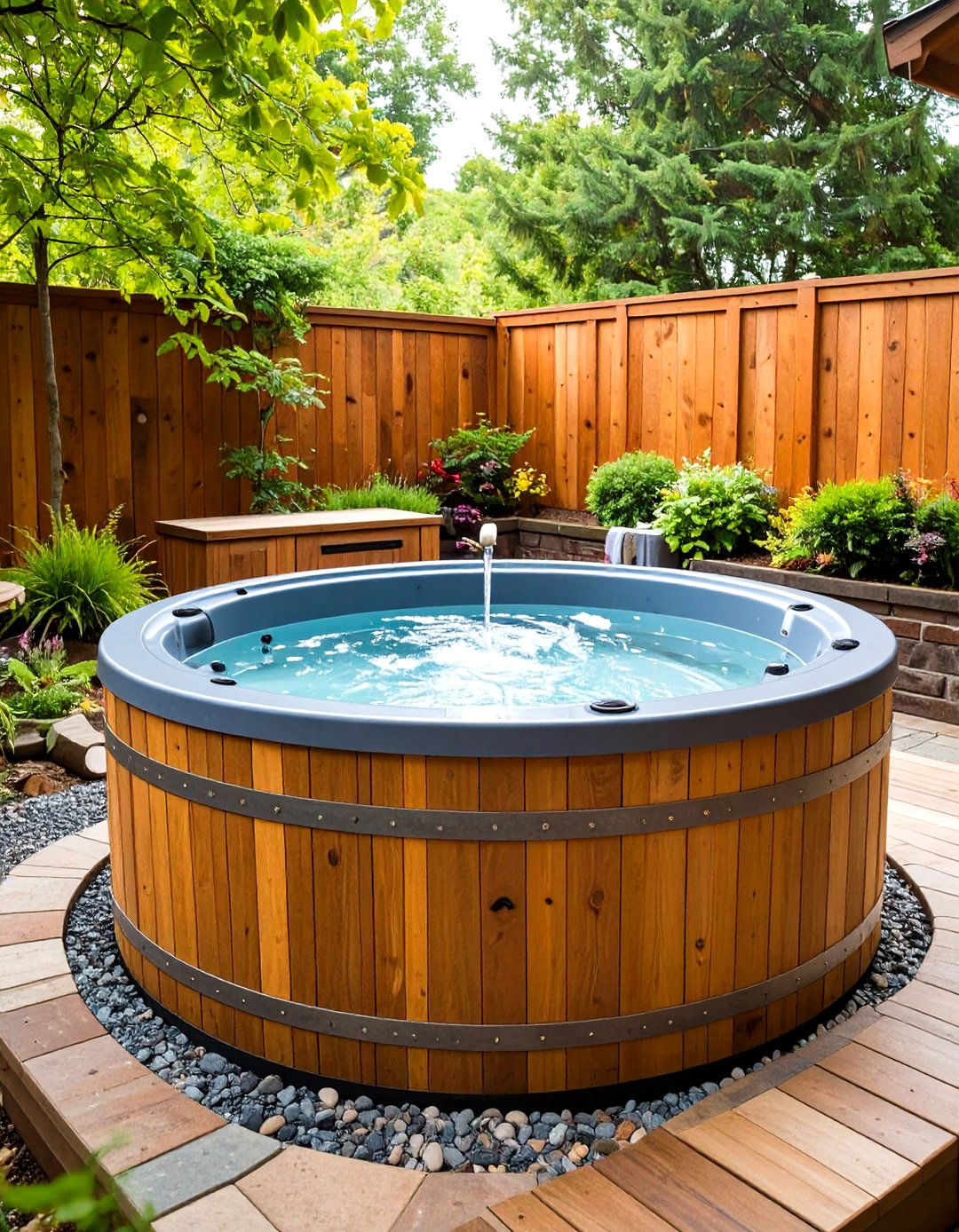
Construct a sunken hot tub surround using reclaimed bricks, salvaged timber, or recycled composite decking to minimize environmental impact. Reclaimed materials add character and patina, while composite boards made from recycled plastics and wood fibers offer durability. Sealant systems with low VOCs ensure safe usage, and rainwater harvesting can supplement top-ups. Designing for disassembly allows future reconfiguration or material reuse.
Conclusion:
These 20 sunken hot tub designs illustrate the breadth of possibilities—from rustic timber retreats and tropical bamboo surrounds to sleek concrete enclosures and boho-chic salons. Key considerations include site preparation, drainage, structural support, waterproofing, and service access. Integrating lighting, fire features, greenery, or eco-friendly materials can further personalize the spa, while placement—under decks, rooftops, or within gardens—maximizes functionality and aesthetics. With thoughtful planning and execution, a sunken hot tub can transform any outdoor or transitional space into a captivating oasis of relaxation and style.


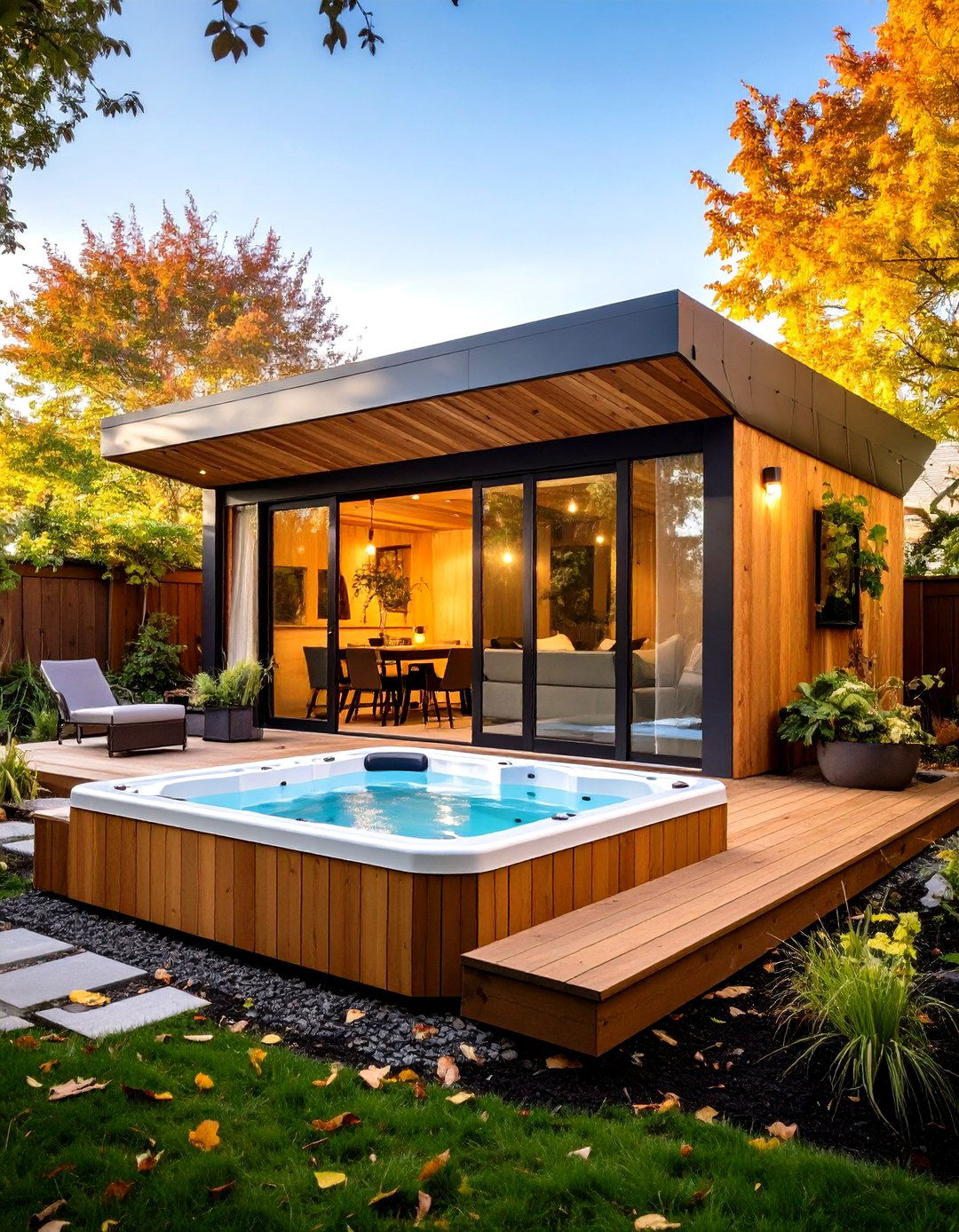
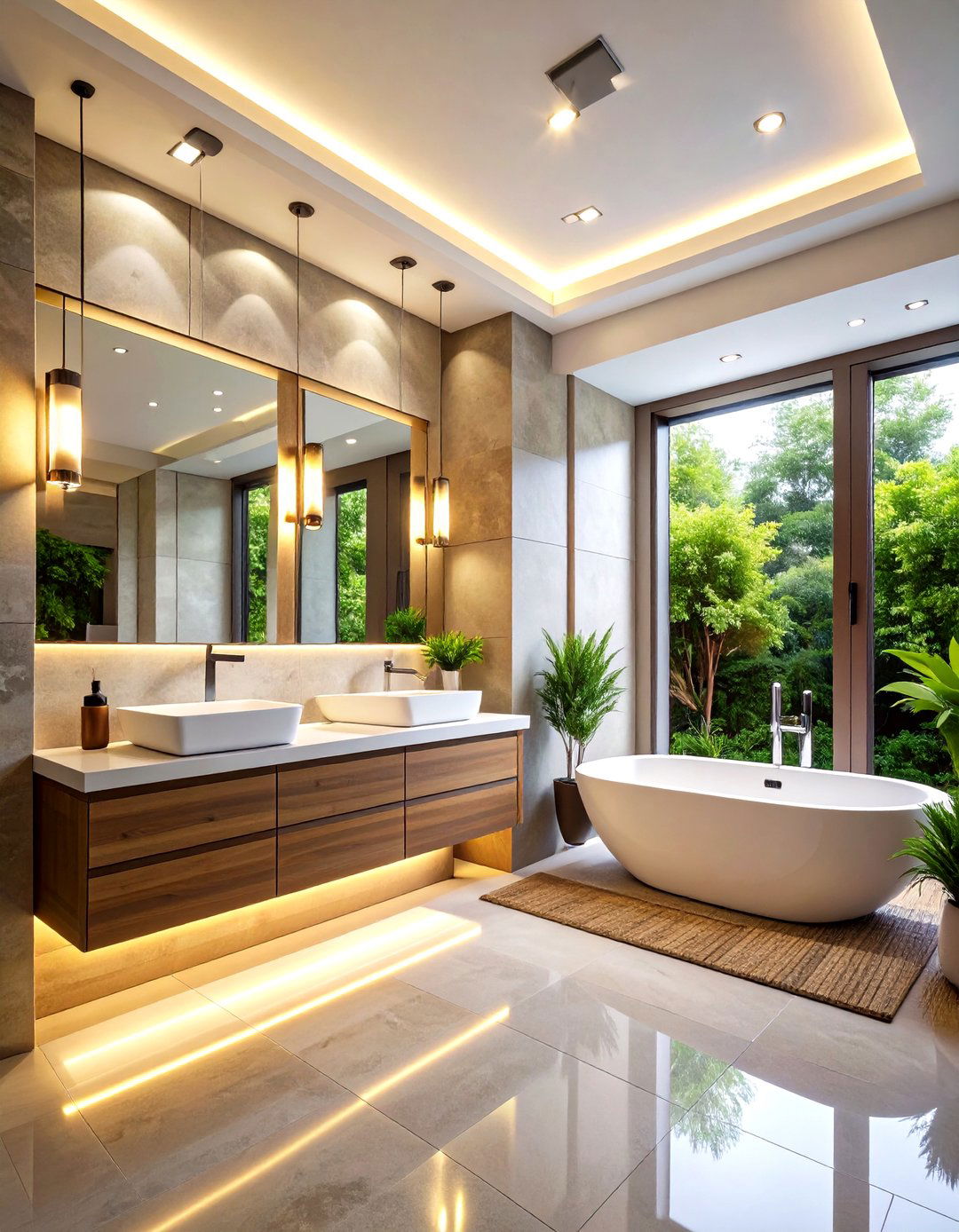

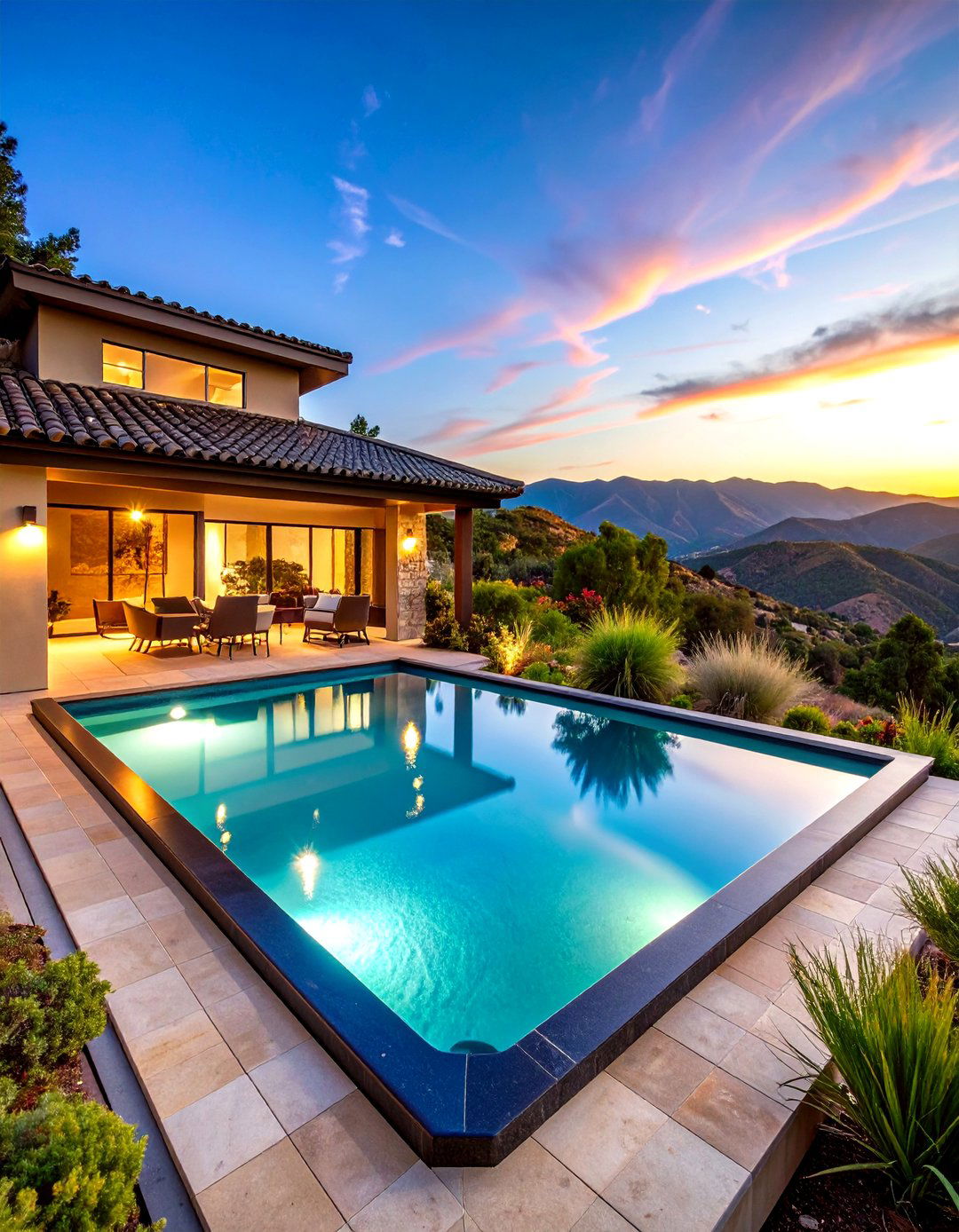
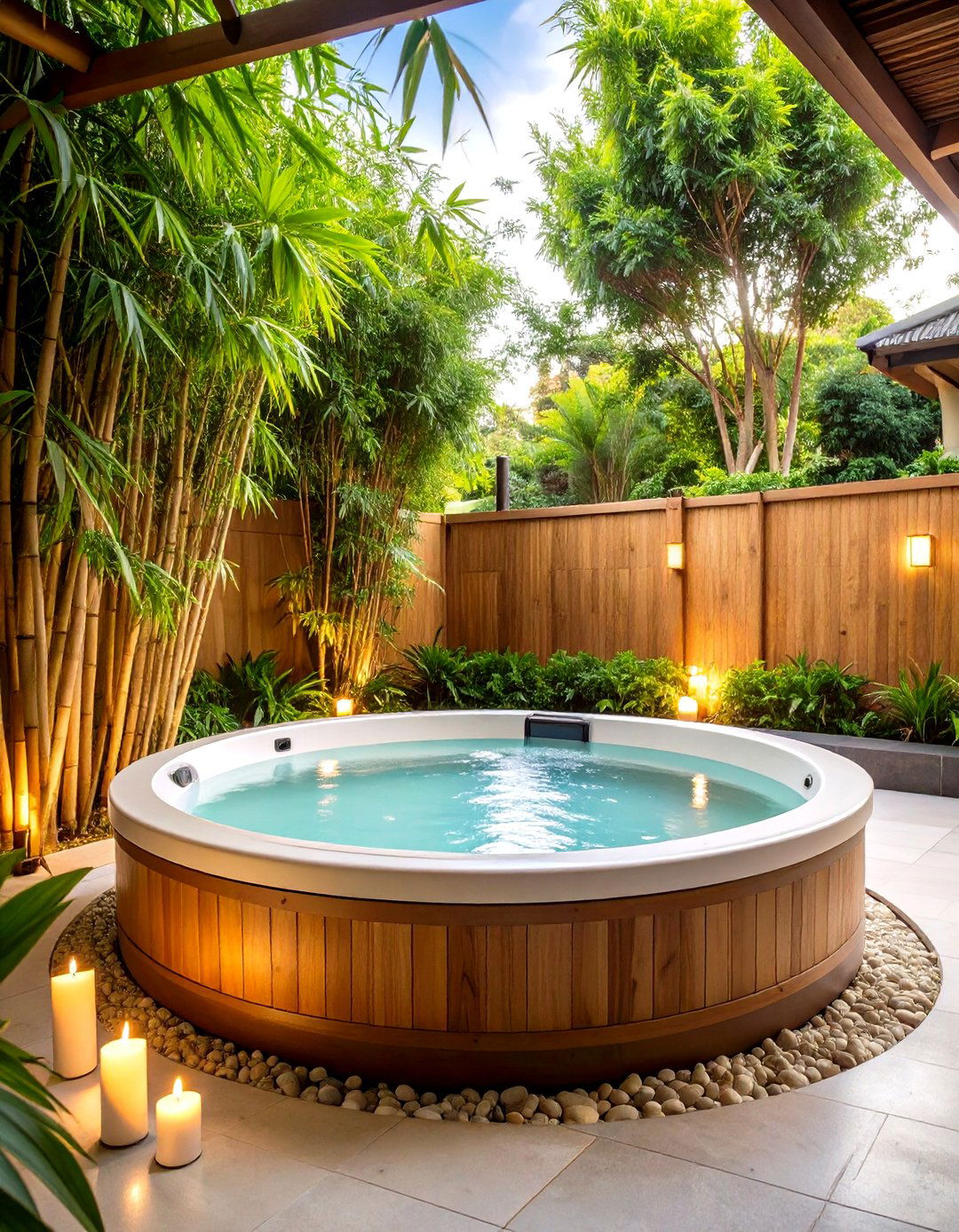
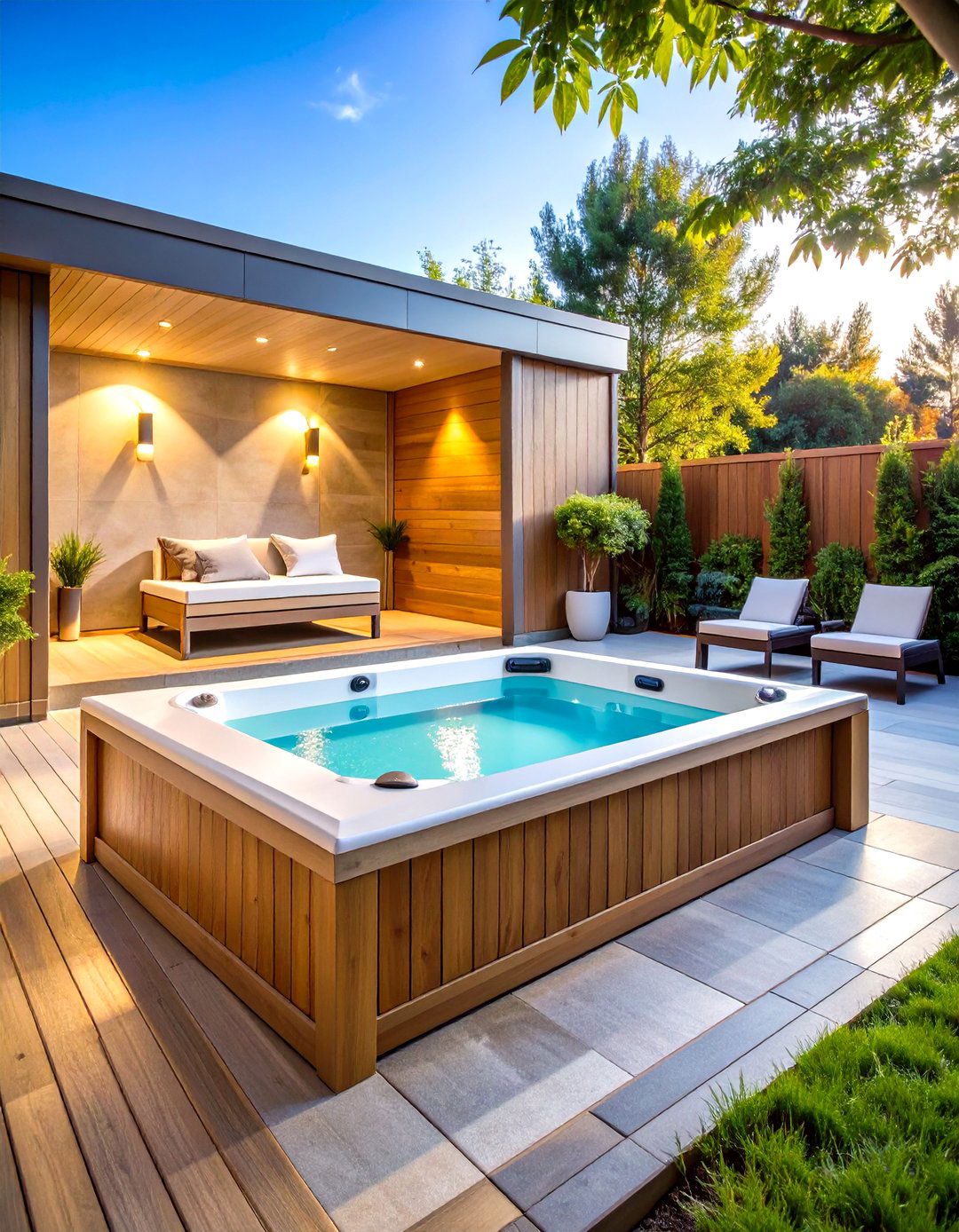

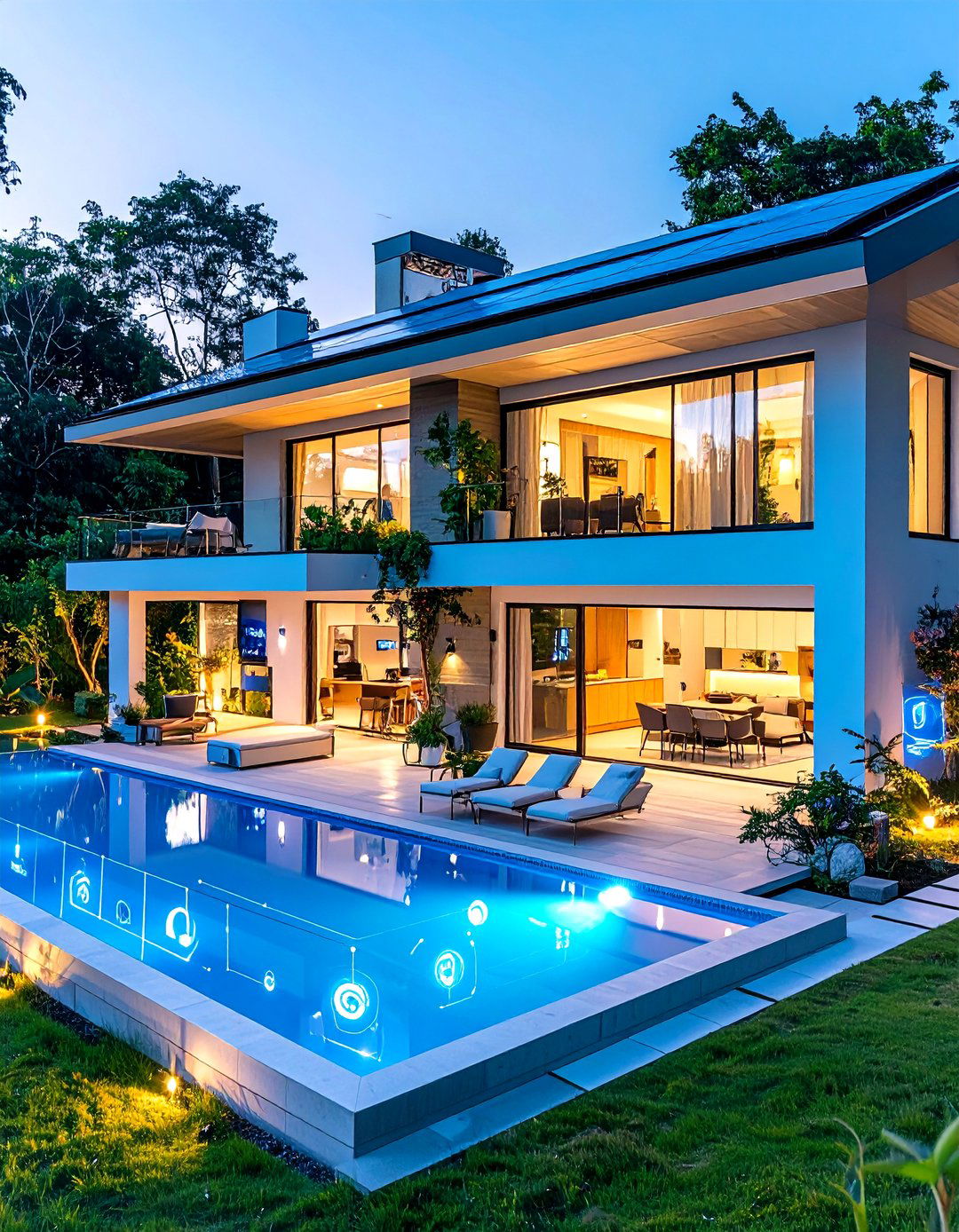
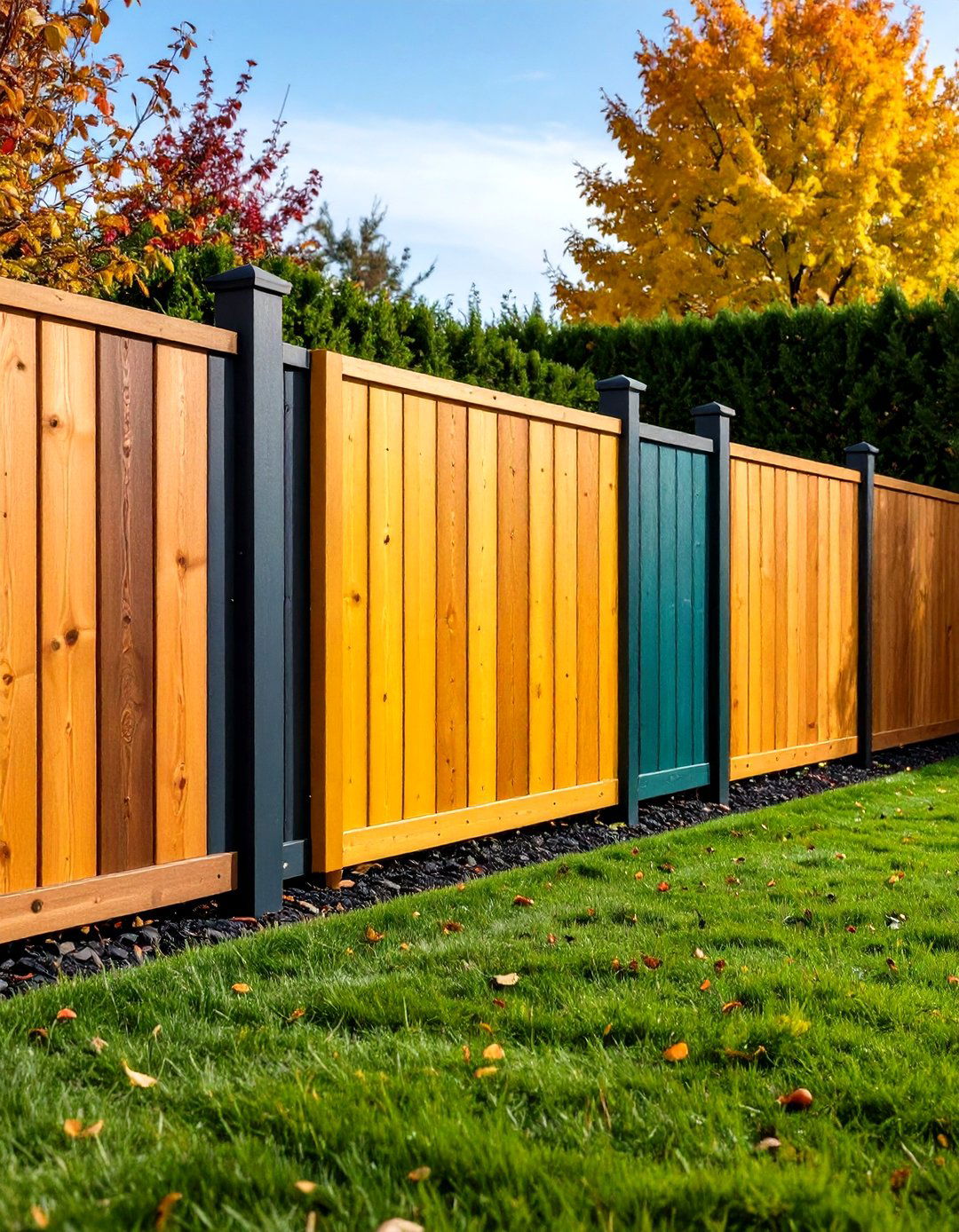
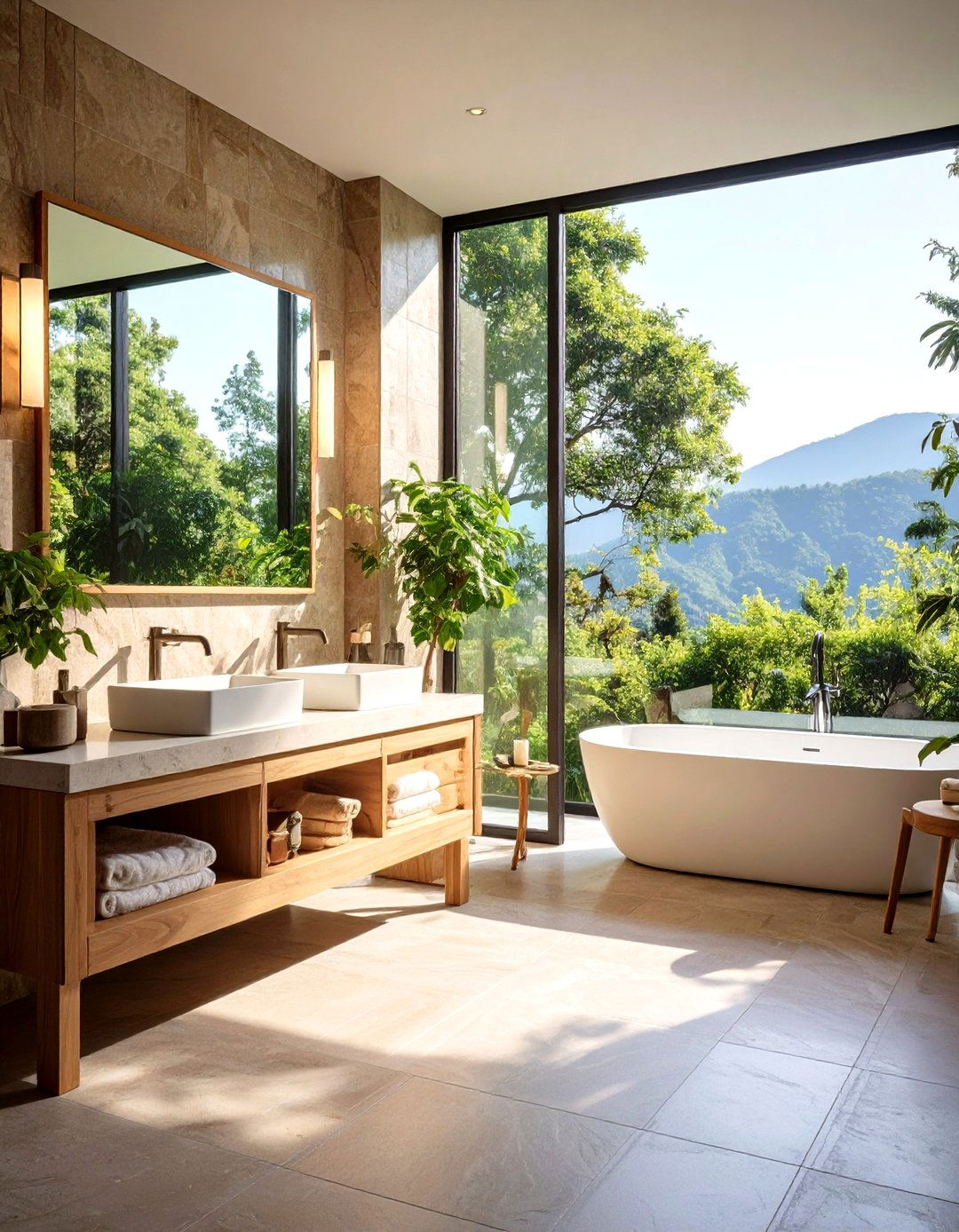
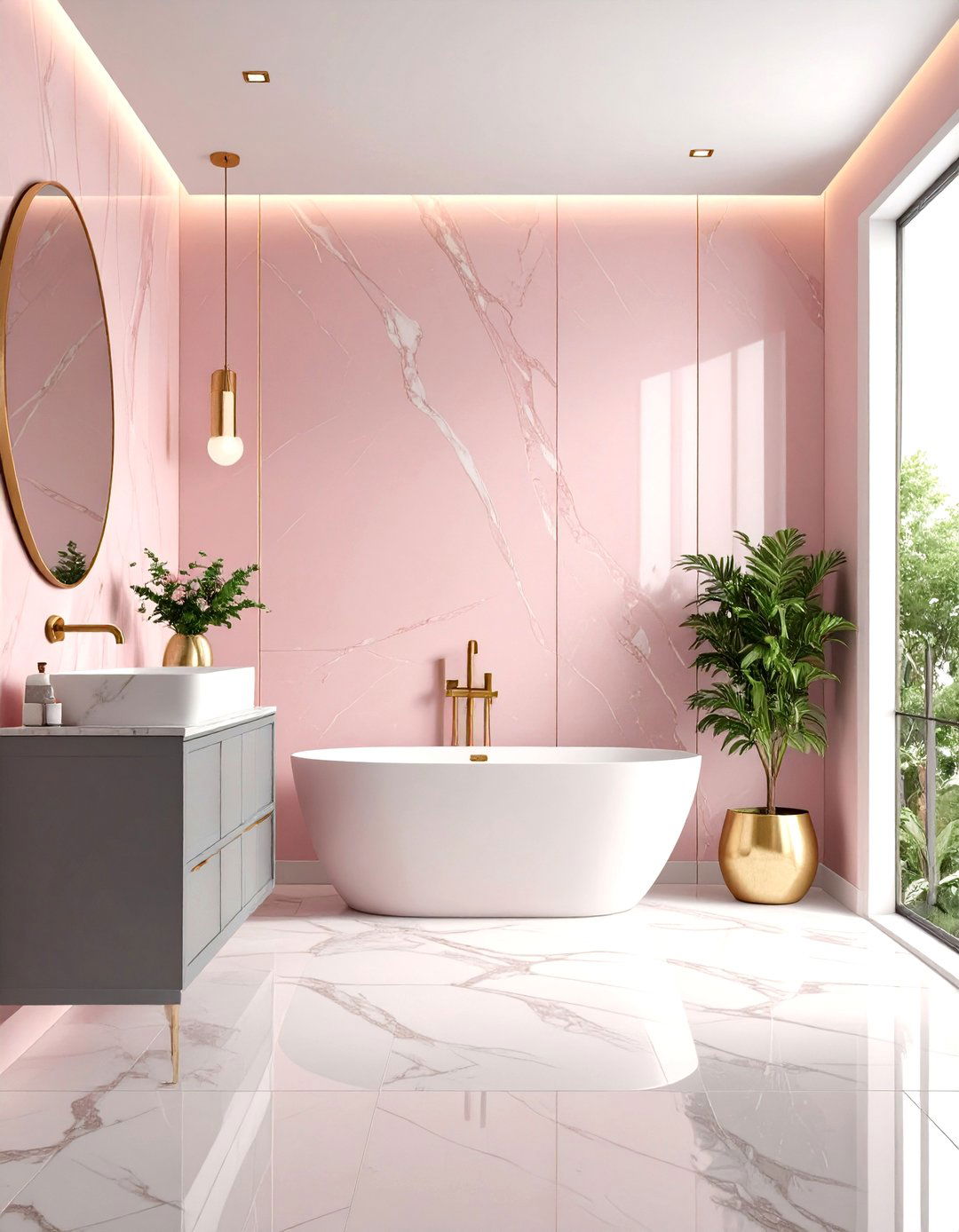

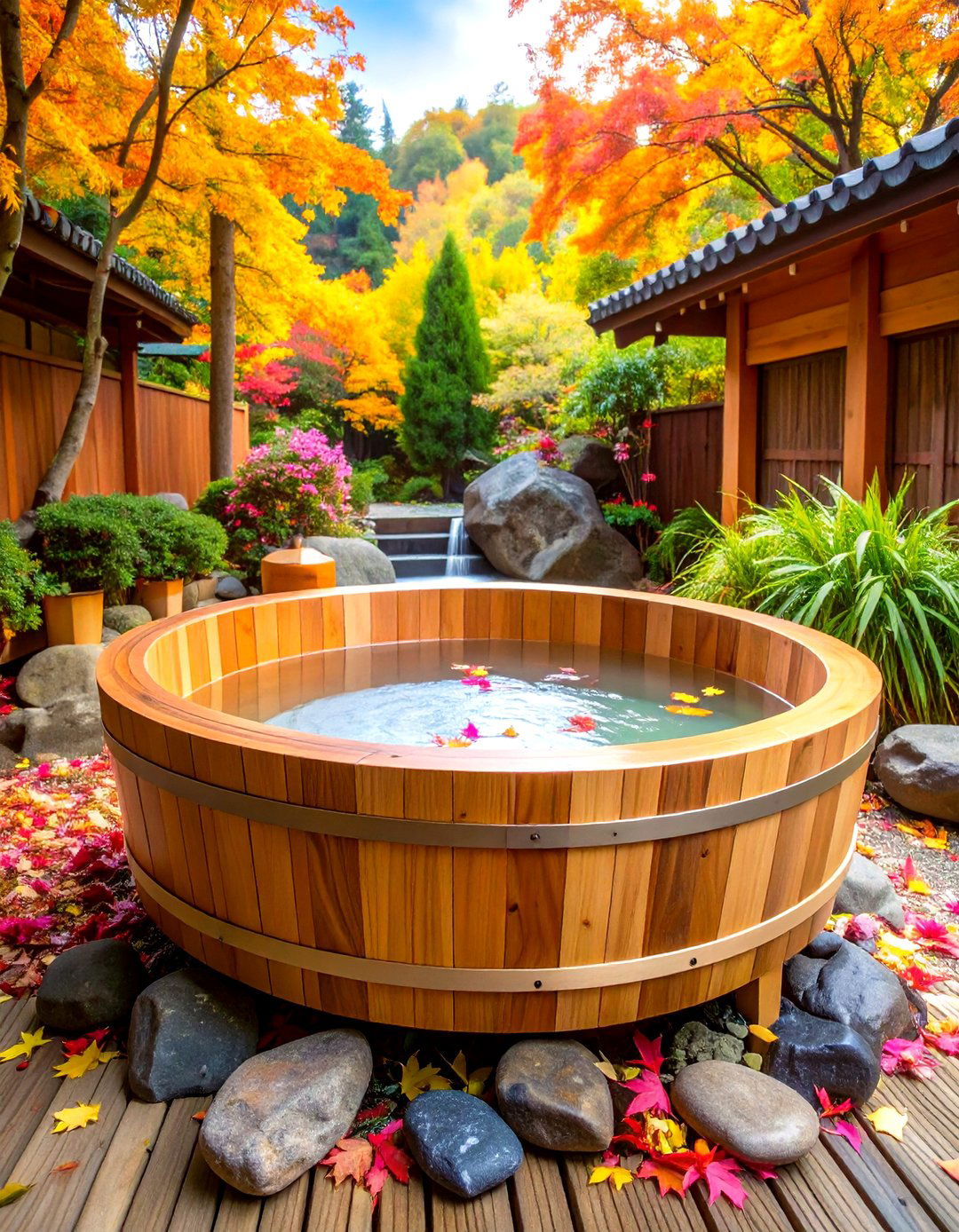
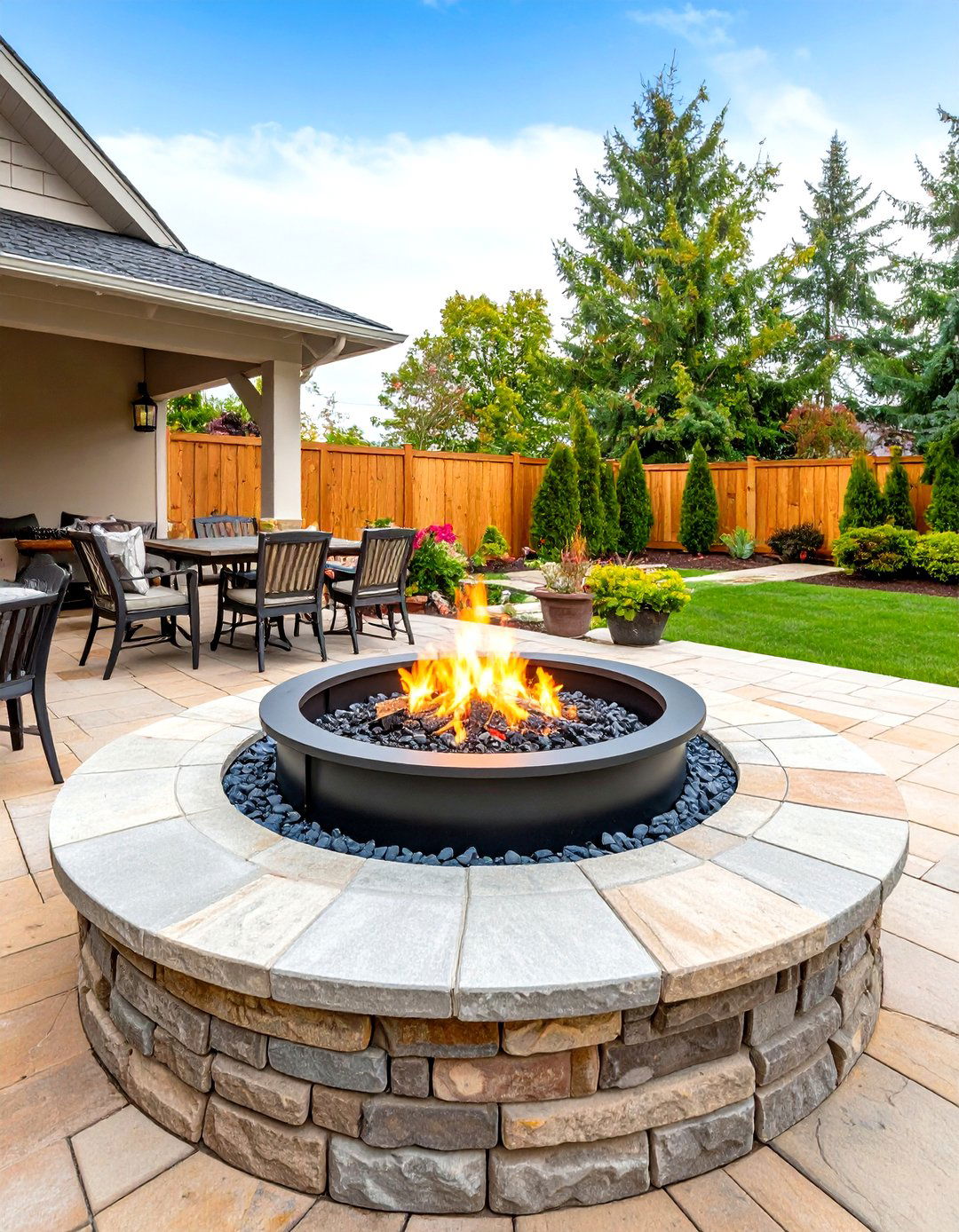
Leave a Reply